|
Today I just want to tease a couple of RPG games we are interested in publishing.
Mutant by Richard Snider Star Master by John Snider I was chatting on reddit and we got onto the subject of Gamma World and other variants. I posted this: Metamorphosis Alpha was published in 1976. TSR had copies of Mutant, but due to conflicts with Dave Arneson they were rejecting any games produced in the Twin Cites. It is suspected they reverse engineered Mutant to create MA. The author likely had no idea of the previous game, he was merely told concepts. I personally do not believe James Ward willfully copied the concept. He was merely told of a game idea by Gary Gygax in conversation and built from that. The same is said about the third volume from the Star Probe + Star Empire series titled, Star Master. TSR was in possession of a draft which had been submitted and they never returned. It became Star Frontiers and the original was suppressed. It seems likely even if the mechanical aspects do not match, the idea was plagiarized from the drafts. Both games are by the Snider brothers who it should be noted were original Blackmoor players before D&D is published. Thus the sequence for those games is: Richard Snider, Mutant in the early 70's > Ward with MA by TSR 1976 > Ward with Gamma World by TSR 1978 > full color boxes and drafts exist for a later attempt at publication of Mutant by Adventure Games in the mid 80's. John Snider, Space Campaign which Arneson dubbed Stellar 7 in 1973 > Star Probe '75 > Star Empire '77 > Star Master draft never published > A print out draft and typed fragments exist of Star Master which was slated for publication by Adventure Games in the 80's > TSR Star Frontiers '82. The Wikipedia entry states that the artwork for SP and SE was done by Paul Snider and that the layouts were done by MMSA members. Perhaps a telling clue about the possible plagiarism is the absence of space ship rules in both the Star Master Draft as well as Star Frontiers. Snider's game was intended as an expansion on his rules for space exploration and empire scale space campaign rules which do cover space travel and space ships. Star Frontiers did not include space ships in the original game, adding them later in an expansion set. We likely will never have a concrete answer, yet, it does lead to conjecture. The question is whether anyone would want a hard copy of either of these games. Thanks, from The Secret Team As always, tell a friend about Secrets of Blackmoor: The True History of Dungeons & Dragons
39 Comments
I am running a game tonight and I need some lore to help develop my arc story, and yes, I wait until the last minute to prep for game night - It’s how I roll. Creating lore for your campaign is actually really easy. You see, most gamers aren’t that picky and what they like is a bit of cheese and campiness mixed with pseudo poetics. Additionally, “perfection is the death of creativity” - Chris tells me this when I get pinned on some minor detail and feel paralyzed for a week. For your own campaign no one will read what you write but your gamer group. They won’t be very critical because you can write things that are easily better than anything being produced by WOTC in the past few years. Their writers are all hacks and you can and will do better! Above all - this is supposed to be fun. It’a called gaming for a reason. Let’s start! The Fall of Ghebelin And the Elfaren ever deceitful small minded and cultivators of jealousies did secretly conjure an abomination to unleash upon the land and all the decent citizens and a great cloud gathered and rolled slowly like boiling water a dark curtain over the warmth of the sun and the giving night sky of she of a thousand eyes as it grew and grew ever outward obfuscating of the everything it touched with choking dust and putrid festering spell linger Ok, what am I doing here? I’m name dropping. Some bad people are doing bad things. Instead of saying exactly what things are I am using adjectives to describe things as being like other things. Yup, Similes! Hmmm.. She of a thousand eyes? Ok, here is more… And the greatest queen of the Ghebelin who ever ruled in the blessed heavens on this earth could sense a presence of the unknown and gathered her advisors unto herself and summoned the seekers who cast the divination sticks at the ground and the wands revealed dark paths fraught aplenty with many doors which cannot be opened and sit silent and mute and a dark fate as hard as stone Notice the lack of punctuation? Yep, ancient writing should be sans punctuation just to age-ify it. More name dropping and describing who these people are. Easy peasy, you can do this too. And then I use verbs to name who and what people are - seekers. Oh, they do some kind of divination, they’re soothsayers! And I add in a bit of weirdness by hinting at fate being closed doors - oh oh , badness is coming. In this last moment of her rule the queen gave unto her faithful Duaraven cohort the ancient scrolls of the Ghebelin the crowns of power which adorn the wisest of her nobles and the blood seed sapphire pulled from her own diadem and bid him go to and forth and with great effort conceal for near an eternity all these sacred gifts with cleverness and cunning in readiness for her return in ten thousand thousand flights of the three sisters More names, Duaraven, hmmm wonder who they are, Ghebelin, err… huh? And we’ve already had Elfarren. If you want it to seem like some old lost scroll make sure to use bad grammar too. Back in ye olden days no one had a copy of, The Elements of Style. Gee, you’d think I was bopping my players on the nose with these names. Sure sounds like Dwarves, Goblins, and Elves. A tee and hee and another hee. Don’t obscure it too much. It’s just a dumb Elf Game so put neon signs on things to point the way and speed things up. Also, the players who are either elves or dwarves are now wondering what is going on here. Things are about to get really crazy in the campaign. What about these scrolls, crowns and blood seed sapphire - oooh, ancient relics! And then the great queen leading her retinue of nobles lords and maids descended into her sacred underworld of the palace where they await in court stepped outside of the riverine time until the day of reckoning when the Ghebelin shall rise once again to assemble a great legion of faithful and avenge themselves upon the cruel Elfarren traitors Ok, so some queen is now dead, or is she? She’s promising to come back? This is really weird stuff here. And the mountains and the great cities fell ever downward and dark waters charged in a flood washing away what had been once great and beautiful leaving a flattened world of rot and desolation and those who remained of the proud Ghebelin hunted like animals by the cruel Alfarren were bled and others of them fleeing to hide deep under earth and rock away from warmth and light and she of a thousand eyes are now downcast fallen and without consolation And now greatest of Queens Arruanni watches and awaits and speaks in the dreaming of the gods to those who are willing to listen to her tale This I write Stone Frothingel last of the Duaraven cohorts to shining Arruanni Queen of all Domains Whao some dwarf dude wrote this a long time ago. He must be the same dude who was supposed to hide everything, maybe? The elves killed the goblins but some got away? What is this dreaming of the gods and is this queen going to talk to our players in their dreams? Final Lesson of the day - Let’s do Cut Ups!A long time ago I took a writing class. As part of it we learned how to make sort of fake poetry. Poetry uses language in ways that aren’t “normal”. And you can do it yourself very easily by re-arranging other peoples words to make your own poetic phrases. Cut the text from my little lore snippet and copy it into a text document. Then take that text and print it out. Now comes the fun part. Take real scissors and cut it up into pieces of sentences. Pile them up and randomly pull out several and arrange them to your own liking to create a rambling sentence or two. Is it starting to feel like ancient lore yet? If you need any extra words in there just steal some from your favorite fantasy novel and add them in. Maybe chop up your own sentences too. Just remember to use lots of descriptive words. Use lots of simile and metaphor. Perhaps the sun in the sky can be the fiery charioteer who arrives at dawn. It’s really ok to be campy and cheesy when you make up lore for your game as it actually adds to the oldness and flavor of past times. Last CommentsI wrote this a few weeks back and have since used this lore sheet with my players. Thus, after some small adventures in Vestfold and Chris being given gifts by the earl himself for the previous week's battle at the old gate where Chris earned the title of, "The Gate Crusher," (The gift was a mixed blessing, a hand painted shield and a land grant for his own domain - an overgrown patch of land in the swamps where he can go build a castle of sorts.) a mysterious woman in leather armor contacted the party and showed them these writings of ancient lore. My house players hadn't met Lavender yet. She features prominently in my game. In a sense she is me. I use my little assassin lady to drive my story. It's fun to get to play as a kick ass girl too. It was at this point I left the room and my players began to read the handout which I gave to everyone. They went over every detail of it. I could hear them reading it aloud to each other from the other room. They even pondered what the different spellings of some words could mean. This taught me to make sure to keep misspellings of names of things in future lore handouts to confound my players even more! Chris quizzed me after the game session about the Three Sisters. He is the one who rolled a 1 on the mountain pass and was transported to have an audience with the the Three Sisters. Thus he asked if the Three Sisters were also a constellation. He guessed that the passage of time since the queen must be 10 thousand years. I deviously commented something along the lines of: That is a good guess. What I didn't tell him is that the Three Sisters are both those same deities and a trio of comets which appear roughly every 100 years, thus making this lore more along the lines of 100,000 years old. Now my players are off to the Forest of Forgetfulness where it is assumed the resting place of the Ghebelin queen may be located. This is pretty awesome for me, because they are heading into a rift between the 999 realms of existence and may even step from one world to another and end up in The Dreaming City. IF YOU SEEK MORE GAME REFEREE INFO:There are 6 more days left to pre-order a copy of The Lost Dungeons of Tonisborg hard bound book.
More info and a red pre-order button are here: www.kickstarter.com/projects/secretsofblackmoor/the-lost-dungeons-of-tonisborg It’s been cold and snowy here in Denver. To be honest this kind of weather makes my spirits get low. The only cure is to think happy thoughts, make yourself smile, and talk gaming - It really does work. Perhaps one of the greatest issues with OD&D and perhaps even AD&D is the problem of a bad roll for hit points. i.e. Your 18 strength fighter just rolled a one for their hit points. So what do you do now? I know both kinds of referees, the by the rules what you roll is what you get ref, as well as the lets fudge that a little bit so you stand a better chance of not dying type. Neither is really doing the players a favor on HP and to be honest the 1 HP PC is still something worth having players run just so they can experience being very cautious at first level. Yet, it can be a a real hassle in the long run. Also, here is an odd thought about the rules from the early days. I recall my first read through on D&D and wondering if hit points were a fixed quantity once rolled, or if players would re-roll hit points before every adventure. It was not very clear how to handle them! Hit points aren’t meant to represent an actual physical property related to how hearty you are. They are an abstraction. Gary Gygax wrote a bit on that in this image I saved from an online post I spotted. Thus even Gygax is saying they are more like a combo of skill and luck in avoiding dying through adversity. I really like what Gary said about his perspective on RPGs and how D&D handled mechanics when it was first created. Although this blog post relates to the part on hit points, so much of this page is pure gold that I have to show the entire image. Having players re-roll bad rolls is the age old cure and yet it feels a bit arbitrary thus I propose a more systematic approach. I feel that any modification to the early editions has to stay within the scope of how the original rules were written. This variant is designed so it remains within the format of simple rules that enhance play without over burdening the game with too many details. The entire design of D&D is predicated on die roll averages. I go into that really in depth in some of my older posts on understanding how D&D works. Ok, let’s get ‘Average’ but leave in a little bit of player NERF and BUFF for the sake of having players be more likely to survive. What if hit die rolls are modified based on attributes? That seems reasonable, yet which attribute should it be and no matter what attribute we use there is the chance of a player having a 3 in that column, so that is still not so great. I propose using the character’s prime ability score, or scores, for classes with more than one. And then I suggest we modify this by the character's constitution score. When I say modify, I really mean one should use averages. Thus a fighter would get Str + Con and this would be divided by 2 to get a modified roll. OD&D breaks things down into Low, Average, and High for ability scores. This really points to other considerations about the design, but that is a whole other can of worms I won’t go into right now. The tally of the Prime Ability and Constitution gives a nice number one can use to modify the hit points die roll with. Now we can use this low, medium, high to modify the rolls for HP like so: -If the Average of Prime and Constitution is 8 or less, the die roll is un-modified. -If the Average is medium or rather 9 to 14, then any hit point die roll of 1 or 2 is treated as 3 and all others rolls are read as they fall. (If you are doing Greyhawk style d8 hit dice anything 3 and lower is treated as 4.) -If the Average of Prime and Constitution is 15 or greater, anything rolled less than 4 is treated as four. (Greyhawk and later versions with d8 it is a 5) Doing this kind of hit die roll modification will shift hit points up, but will not create an incidence of a higher quantity of high rolls. It just means the lows are more likely to be shifted toward a mid range. Also, some PCs will tend to get higher hit point Tallies based on their attributes. That's all I have for today. Make sure to pop by the Kickstarter, if you haven't purchased a book already, as it is rapidly coming to the final deadline.
Order a Copy of Tonisborg Here: www.kickstarter.com/projects/secretsofblackmoor/the-lost-dungeons-of-tonisborg Something to consider in your Blackmoor world setting are the different orders which exert influence and force, whether as an alliance or loyalty to a greater power, be it a religion or a realm, or simply some kind of deeply held belief. Of course the most known factions are The Red Wizard Coven who worship the nameless deity and are known for their underground temples that are covered in meander chalk drawings and their ally, the being known simply as, The Egg of Coot. On the side of good there are two prominent organizations also. The Order of the Dragon in Blackmoor and The Hunters in the Deep of Vestfold, known as Fastness Fold in my own campaign. These are forces that work for the Baron and the Earl. The two organizations are like the CIA and MI6. Each works for their own ruler, yet, they are also known to work together in their endless fight against the various other enemy states of Blackmoor. The Order of the Dragon is an elite military unit. They will not break under pressure as they are battle hardened troops of the greatest ranks. They are also known to have some assassins as spies that work for them. And they have paid watchers who gather information for them from all over the world of Blackmoor. The Hunters in the Deep are a secretive society of assassin spies. They do the behind the scenes dirty work for the Earl. Yet, a lot of what they do is to simply gather information on the goings on around the world of Blackmoor. Neither will spy in the other’s realm or on the other group. They do sometimes send agents on missions in each other’s realms as a collaborative venture. The Order of the Dragon is a known group as they can be seen around Blackmoor in their white tunics with red dragon heraldry. Yet, what is not known is their other mission of protecting the realm through either force, or intrigue. Perhaps a modern comparison is the Special Forces which most nations have and are called on to perform clandestine military missions. The leader of the Order of the Dragon is known as the Great Svenni. He is an old experienced warrior, loyal to the barony.
The Hunters in the Deep are only known via whispered rumors. They do not parade around in uniform. They are everywhere and nowhere. It is rumored their leader is a person who goes by the name of Lavender. These two groups are very useful for creating interesting scenarios for your own campaign, be it Blackmoor, or your own creation. In many cases they work indirectly, and those who work with them will be operating as agents of agents in vast networks. Indoctrination to either group is a long process of gradually being accepted within the group through challenges and the accomplishment of difficult tasks that require the building of deep trust. Both groups also have secret hand gestures and symbols that are used as codes to recognize other agents. The Order of the Dragon uses imagery having to do with dragons and the Deep Hunters use images of octopus. The two groups are in a constant struggle against incursions by agents of The Red Wizard Coven and The Egg of Coot. Often the goal is merely to place counter spies within the other organizations in order to keep tabs on what their nefarious plans are. Just recently, the Egg's agents managed to create an alliance with the Thieves Guild of Fastness Fold. This led to the siege of the city with an uncursion out of Tonisborg Dungeon through the old gate in order to break the city defenses. Luckily the Deep Hunters had agents in place and were able to find out about the plans for the raid out of the dungeon. The house group of players took part in the defense of the old gate. Chris was having a fiery night with the dice and every turn he was cleaving multiple orcs in half and pressing the attack. Eventually the attackers broke morale and Chris led the counter-charge across the bridge to the island, with the city guard following his lead while chanting 'Gate Crusher.' Chris has earned a reputation and a title as a fearsome champion of the realm. It can only be expected The Deep Hunters will be knocking on the Gate Crusher's door some time soon as brave adventurers are hard to come by and of great use to the organization. New players will always enjoy a good romp through a dungeon and it is hard to get them to want to do much more than that. Yet, if you consider that the forces for evil are always colluding to undermine the order and balance of good, then there are a lot of small missions that a party of adventurers can be hired to go on by either of these organizations. In many cases these adventures can begin in a town or city and go to the wilderness or even back to the dungeon. Thank you again to everyone who supported our recent Kicktstarter project. Please let your friends know that it isn't too late to purchase their own copy of, The Lost Dungeons of Tonisborg. Share the Link: https://www.kickstarter.com/projects/secretsofblackmoor/the-lost-dungeons-of-tonisborg Unpacking the entire experience one has at a Gary Con takes time - so much happens there. You meet so many awesome people and play in so many games. By the end of it, the memory becomes a blur. What I find is that over time the most important memories float to the top. One of these was being able to spend about an hour one on one with Lou Zocchi and quiz him about all the games he made. Something that had been on my mind for a long time is how I felt that his Alien Space and Star Fleet Battle Manual seem to be a huge influence on the Star Fleet Battles games. It is hard not to want to compare the ship damage logs between all three games as an obvious connection. “… They contacted me about it. I told them to go ahead and make their game and I was fine with it. I had already printed 5000 of copies my game.” - Lou Zocchi Personal Conversation GaryCon 2022 Ok, so a game designer just lets their IP go out and be used in someone else’s game? It seems Lou is just a very magnanimous guy. He allowed another company to piggyback onto his original design and produce a game that became a huge success. I can’t think of any game club or group of gamers back in the 80’s where a copy of Star Fleet Battles wasn’t floating around in someone’s backpack, or actually being played at game night. That story alone was an interesting peek into how the indy game community operated back in the day. Everyone knew everyone else and you could just ask someone if they minded you using their ideas in your game. Meanwhile, also BITD, the big companies were busy unleashing their attack dog lawyers on each other over such things as Orcs and Balrogs. Maybe nothing changes after all? An Old School Gem that is Worth OwningSomething else happened at Gary Con. Well it happened there, but I had no idea about it until I got home! When I go to Gary Con I always bring a Banker’s Box with me. This is where I keep every game that I will be running at the Convention. This time it had a bunch of lead ship models and the various other implements for running Fletcher Pratt’s Naval War Game, A print out of Dave Arneson’s Draft Rules for D&D Areal Combat along with counters and dice, And Also everything I would need to run a game of Tonisborg Dungeon. After the con my box of games just sat there in a corner untouched. I don’t need to unpack it as I leave it alone until a week or two before the next Gary Con when I go to work on creating new scenarios for my convention demo games. I can’t recall why, but a few weeks ago I popped the lid off the box and sitting right on top was something I had no recollection of having seen before. Maybe it was handed to me and I forgot about it, or maybe someone was a little devious and snuck it into my box when I wasn’t looking. Hmmm… some kind of booklet. I peered through it and realized it was a fanzine for D&D. It floated around the house; meaning it would be on one of my To Read Piles located at various locations as I tend to read several books at once. Thus I would pop it open and read a little bit of it then set It down unfinished. I will tell you, the more I read, the more I wanted to read. It just seemed to get better and better the deeper I dug into it. You see, this little fan booklet is a time machine. It has the physical dimensions of the original, Little Brown Books of Original D&D fame. It also is the same dimensions of another fanzine I was very fond of in the 70’s, The Dungeoneer. If you want to know more about The Dungeoneer my advice is to do your own web search, as my fanboy passion for The Dungeoneer runs really deep and I would end up doing an entire article about it. Trust me, you’ll find a ton of info on it as others have already covered the subject extensively and most likely in a better manner than I could. I have a thing for small books that can stack neatly with my LBBs. In the old days my white box had the 3 LBBs, 3 supplements. Chainmail (2 copies), and swords and spells inside it at all times, along with my favorite small form fanzines. At first I couldn’t even tell what the title means. Is it, the Wizard Funk as an homage to Fred Funk of the Blackmoor Bunch, or is it just Wizard Funk as a commentary on smelly gamers? What got me to keep looking through the book is the art. Cover art by Craig Brasco. Interior pieces by Colton Rosws and Josh Ross. There are other very interesting pieces which are un-attributed. There is a small gallery of art by Thaddeus Moore. Every bit of art is black and white and just screams old school. To be honest the layout sort of turned me off at first. It looks like it was laid out in word, complete with Xcel sheet style grids. But now I’ve really warmed up to it. The fanzines of the 70’s reflected the technology available in their time, well then, a contemporary fanzine will reflect current technology. It should be made with ink jet printers and the all too familiar fonts and layouts of common word processors. When it comes to books I am a bit of an ADD freak. I pick up a book and find a page and read for a bit. Then it gets tossed aside. Thus it has taken me a couple weeks to get through this book. Yet, the feeling I have from it is that I want more. And that this belongs in every traditional RPG players tote bag. The Issue I found, which is issue three, contains: 3 interviews with old school luminaries 2 complete dungeons 5 Rule Variants and additions Everything in this mag is the kind of stuff all of us would read back in the day. The interviews were eye opening for me. Granted the one with Stephen Rocheford was all stuff I already knew since I have 2 interviews with him and often call him on the phone to catch up on things. But the other two were surprising and now because of these short interviews I have other games I may need to find copies of and study. The same can be said for the pre-gen dungeons. I never run other people’s dungeons modules, but I love reading through them for ideas. Both dungeons are prepared in the time honored fashion of being very scant on details. Each room description has just enough info to guide a DM without railroading every little detail. A new DM could easily draw their own map and then place the encounters from both dungeons into it and create their own game. The game variants are something that will inspire any referee. Eric Hoffman’s D100 Humanoid Traits is a random chart for designing unique properties for the standard Orc, Kobold, or Goblin clan. I may not like every idea on here, but you can be sure I will be ‘lifting’ some of these encounter ideas into my own Blackmoor Campaign. Thaddeus Moore writes about uses for mundane items. Everything from Chalk to Wool Blankets has at least one way to use it creatively on an adventure. I love this article because again, it is a jumping off point for creative play both for players and DMs. Other articles include a guide to using M.u. spells that are not combat oriented. A random dungeon generator and even a list of words one could use to describe weather conditions in the wilderness. The beauty of this booklet is that it truly is fan material. You aren’t going to find it very easily. There isn’t any contact info in the booklet. It does have attributions, thus I was able to determine that the most likely creator is Robin Irwin who played in my Tonisborg session at Gary Con. I expect that is when he slipped it into my bankers box. I like it so much that you should not be surprised if an old blog post of mine appears in a future issue. I want to make sure this mag keeps on being published and I will gladly donate white box D&D content to it in order to make sure they have enough articles to publish into the future. Last of all I would like to point you to our website. If you scroll down on the front page you can get on the mailing list.
https://www.secretsofblackmoor.com Being on our mailing list gets you updates, but only the critical info. We won't hit you with a SPAM email every day. Please get on the mailing list. It is the only way to find out when the Kick Starter for The Lost Dungeons of Tonisbrg will launch. If you have a copy of TLDOT already please post some photos to your social media or on a forum and help us get the word out about this wonderful and unique book. If you have seen the documentary make sure to tell a friend about it. Thanks, Chris and Griff For those who have never played the game. It is the first RPG with real interaction between players. It is also the first in a lineage of games. Over time it gets morphed into other games which are finally published as the Fantasy Adventure Game, Dungeons & Dragons. Anyone who plays any RPG today is likely playing a descendant of David Wesely’s Braunstein games. This year at Gary Con I once again managed to get invited to play as The Man from Imperialist Industries. This means I get to play the American in the fictitious South American country of Banania. The game is interesting since everyone is given a persona to play as well as an objective they must achieve. This is complemented by a variety of assets; be they a group of people who support you, weapons and vehicles, cash money, or dirty secrets about another player’s persona. Since the game models the power struggle between people of varying levels in status in a fictitious banana republic in the 1950’s, one’s goals are based on improving one’s position in the social hierarchy during game play. It is non zero sum in that several people can win the same game. This is either because one’s objectives do not overlap with someone else’s, or due to an alliance of players with similar objectives. As the game began we were all informed that today is the national holiday celebrating Banania’s liberation from the European Colonial Oppressors. There will be some kind of procession and carnival. But all is not perfect in Banania. Our great leader, El Jefe is on a diplomatic trip to the United States thus control of the great nation is in the hands of his capable, and equally corrupt, underlings who run the various military branches. El Jefe’s son is on hand as well, though many question his ability to lead anything more than a drinking party. The banana picking and packing company has been exploiting the workers and the fruit pickers union, as well as the banana packers union, are both agitating for reforms and higher pay. It is even whispered in some places that they will demand the shockingly radical concept of the 12 hour work day! Most games of Banania end with half the town on fire and tanks rolling around while helicopters hover overhead, while the populace is streaming into the jungles for safety. Words such as Byzantine, or the name Machiavelli, come to mind. The game is all about good wholesome back stabbing political fun. For the record, this is my kind of game. It models human behavior really effectively. It also allows a creative schemer like myself to really stretch their creative ability. Right from the beginning of the game the heads of the secret police, the marines, the army, and the air force all identified each other and left the main room to go outside in the hallway and collude. This left me, as the American, with tons of cash, to go about stirring the pot of dissent and having meetings with the rebel forces whom I ask to create a bit of havoc in the city. Nothing really fuels the need for American made goods than a good old civilian insurrection. By goods, I mean arms shipment orders. It’s the 1950’s and US interventions to promote democracy are ramping up around the world. Most of all, the military industrial complex has sidled up to the trough and demands its share. I also met up with the fruit packing company owner and asked what I could do to alleviate the schism between the workers and the company. Oh, did I mention that I was already waving a big stack of dollars around and handing out tokens of my appreciation to everyone I met with? I don't really care if he talks to the unions, I am just spreading cash around to make friends as a form of insurance. Yup - Cash is King in Banania! I honestly cannot remember every detail of what transpired in the game. What I do recall is that the game seemed too imbalanced. Every turn, the heads of military would gather outside to discuss their plans for dominance, then return to the room we were playing in for the next set of moves with big smug grins on their faces. There seemed to be nothing to stop them from openly displaying this feeling of impending victory. Having played games of Banania before, I knew that the workers would likely head en masse to the main city square in order to hold a political rally and that all branches of the military would then descend on this rally and start breaking skulls. As the game progressed I also realized I had not achieved any of my own objectives of leaving Banania and heading back to the good old USA with a briefcase full of cash. I was stumped. I wasn’t losing and yet I wasn’t winning. I was just sitting in my hotel on the south eastern edge of the map spinning my wheels. Of course this was my game persona sitting in the hotel. In reality I was sitting in a conference chair staring at the smug hubris of the military leader players and wondering what I should do to up end their glee. Something needed to happen and soon. As I sat there feeling a bit dejected, it came to me that what I needed was a way to pry them apart and make them feel less confident. Thus I hatched a plan to redirect their energy and cause a bit of chaos of my own. All I needed was the right kind of lever! The next turn I took each one of them aside, one by one, for a private meeting. We would discuss their needs (This is where bribes would be mentioned as well.) and my need of a visa so that I can leave the country in a plane. Then as the meeting was coming to an end I would casually let drop a comment like this, “I suppose you already know about the assassination plot against all the heads of military?” You’ve seen the old credit card commercial that ends with the statement that some things are priceless. Well, with every meeting I held, the revelation of the assassination plot was truly priceless. Every single player I met with briefly lost control of their facial expression. I could see their smug smiles contorted into looks of shock and even fear. Of course, I was inwardly giggling to myself. “Oh, you had no idea that there is a plot to decapitate the entire military and secret police via assassinations and replace you with new blood?” Somehow it had never occurred to any them that they themselves as individuals could be the targets of violence. Or, that they could be easily removed from the game entirely. After a few seconds each would ask me where I had heard of this scheme, to which I would respond, “Oh, you know, rumors like this just float around in Banania. My advice is that you avoid public places and keep your defenses close.” I would end with a plea for that visa I wanted along with a down payment in cash and a promise that I would send a large cash gift from America once I was home safe and sound. Every meeting I held followed a nearly identical script. Talk about Banania business, ask for visa, reveal plot for assassinations, ask for visa again, offer some cash. All followed by a hand shake. By the next turn, the military heads were once again gathering to confer on their master plan. I wasn’t privy to their scheming, yet I suspect that on this turn the mood was different. Most of the scheming was about how not to get rubbed out by assassins. They probably talked about little else thus their other schemes were delayed by this, shall we say, distraction? On the next turn our game ended. David Wesely conducted the epilogue stage of the game where he reveals all the secret story lines and what everyone had been scheming about during the game. We were low on time, thus he hurried through everyone else’s activities and did not cover what my persona did during the game. I stayed to help David pick up the game and pack up to leave. As we did this he asked me what I had done on the last turns of the game. I explained that I had gotten a visa to leave the country, thus I had effectively won my game. Then I went on to explain how I had managed it and I had the pleasure of seeing David Wesely get an impish sparkle in his eye along with a look of admiration as we both laughed heartily over my end-game. The game had ended strangely. By the last turn of the game we played everything was different from every other game of Banania I had ever seen played. Sure, the workers all gathered for their anti government rally in the city square. Yet, the military was nowhere to be seen. Unlike the other games, the military wasn’t running around cracking people’s heads in order to create peace. Instead, what happened is that each branch of the military was hunkered down in their own area, safely away from everyone else, protecting their leader and doing nothing to stop the insurrection. It was, dare I say, un-Bananian in every way I can think of. Banania is just a game. You don’t get an award or certificate of participation for playing. All you have are the good memories of having played the oldest individual role playing game in the lineage of games that lead to Dungeons & Dragons being published. On top of that, the only person on the planet who runs these games in this exact manner is the creator of the game, David Wesely. In my case, I got the respect and approval of the game designer himself for my medieval conniving. You see, I really needed that lever to pry apart the powerful alliance a little bit and to help me get what I needed to win - my lever was simply useful information. I am proud to say that via my revelation of secret information, none of the generals got assassinated, and there was no bloodshed in the city square - just this once. I even got my visa and left Banania, presumably while flying first class and sipping champagne. Since this was the last game session of Gary Con on Sunday, we had to pack up quickly and my own plans were never fully revealed to the other players, which is a pity, since they never got to find out that the assassination attempt was just a story I made up to trick them all into helping me achieve my goals. I will leave you with this quote from Ross Maker in Secrets of Blackmoor, “…He’s the American. You can’t trust anyone else in Banania, but the American has gotta be straight - right?” Don't Forget to Tell Your Friends to go WATCH - SECRETS of BLACKMOOR:
LINK HERE TO SEE THE MOVIE I speak for both Chris, myself, and the entire Blackmoor family in conveying sad news.
I’ve been struggling to come to terms with the loss of a great person from the Blackmoor Bunch. He is perhaps the least celebrated of all of them. He wasn’t a young guy in the Arneson basement and he wasn’t even a gamer. He was Dave Arneson’s father, John Arneson. His grand daughter, Malia nicknamed him ‘Grumpy.’ Chris and I met Grumpy while making, Secrets of Blackmoor. He was a complete surprise to us because we were expecting a fairly calm and normal interview, after all, John was already in his 90’s when he sat with us for his interview. In one of my first comments to John, I said, “You look like your son.” And he responded with, “I feel sorry for the guy.” John set the tone for the entire interview. No matter what we wanted to get from it, he was there to have fun. I was with my own family when I got the news. Malia’s husband, Luke phoned and quickly told me the bad news that John Arneson was no longer with us. I sat at my dining table and cried while trying to explain to my own family what John means to me. All I could say is that the people I have met while making the Blackmoor movie are very close to me. They are my extended family. I care about all of them and I feel a duty to all of them. And that my feeling over John’s passing away shatters my heart. He was the fly on the wall when Dungeons & Dragons was being invented in his basement on Hartford Avenue. It is his retelling of those days when his son would gather with his friends in the basement that is most revealing about that time because his experience comes from outside the group of gamers. He was an adult who saw glimpses of what transpired. His voice can take us back to the time before role playing games were a household activity. When he tells us, “I had no idea what was going on down there… It was way over my head,” as well as,” It evolved - slowly,” he gives a look into a past where RPGs would be completely alien and not easily understood. He infuses his retelling with his own perspective of the activities and people in that time. There is no glorification of events with an epic and grandiose tale about the invention of this new RPG game. In his voice It becomes almost banal. It was just a bunch of goofy teenagers wasting their lives playing games in his basement when they could have been out doing something more useful. No one else could describe it like he does. I suppose one would want to know more about John. One can read obituaries where selected facts are reviewed. These sorts of things: John married his high school sweetheart Maxine. Not long after, his wife gave birth to their only child a son they named David. He worked for the telephone company all his life. He is part of the greatest generation, which fought nazism and imperialism around the world. A decorated veteran, John was a marine and was at the battle of Pelellu. He could tell you stories about what it is like to land on a beach while being shelled by the enemy. He also served in Korea. Within the inner circle of the Blackmoor Bunch we’re all just trying to make sense of losing John. As you get older, you experience these losses more, and perhaps too often. We try to get a little tougher about it. Yet, in moments of private reflection it can feel like one is alone in grief, or that no one else has ever had to deal with this kind of feeling. Everyone deals with these times in their own way. I am trying to give you a feeling of who John is, yet, I am also trying to express what he means to the Blackmoor Bunch. His place within the group is singular. Most of you only know John through having seen him in the documentary, Secrets of Blackmoor. You may not know just how significant John is to everyone who walked down the stairs to game in the Arneson basement. Every one of those older people who we interviewed for the film was just a kid when they met John Arneson. Going to someone’s house to game also meant greeting their parents and making sure to say those please and thank you’s for all the free soda that was being provided at the game session. As the adult, along with his wife, John commanded respect. When we interviewed John we invited David Wesely to sit with John during the interview. At one point John looked at David and you could tell by the way he addressed him, that for John, and despite his being ‘all grown up’, David was still one of those kids who used to come over to game in the Arneson basement. I can also tell you that the one story I heard from nearly everyone in the group regards the bottles of booze sitting in the basement bar. It is a note of pride for all of them that not one of them tried to steal a nip of something from one of those bottles. They were all guests in John’s house and no one was going to be breaking any rules if they wanted to keep coming back to game there. John Arneson is the de facto patriarch of the Blackmoor Bunch thus he symbolizes many things which may be hard to put into words for those former kids. I do feel that a sense of continuity is broken and it can never be repaired. When a dear one is lost to us it can feel as if I we are the only one who truly acknowledges this loss. The only one to know. As if the entire planet is moving along in its daily routine and the greatest person who had ever lived has just left the planet. How can no one else seem to know. Yet, for us, nothing can ever be the same. No one else will ever get to experience what it is like spending time with the greatest person who ever lived. The Blackmoor Bunch are never public about personal events past and present. Perhaps it’s a Minnesota thing, they just are not bombastic. Yet privately, we talk to each other, especially at times like this when our world is changed. I was pondering this, when I got a message from Malia this morning. “He was such a pillar in my life. I welcome the distraction of planning the funeral because I can not fathom the massive hole/gap that I will have to face and feel when the dust settles.” It’s good to be sharing our heartbreak. It is part of how we honor our loved ones. I love how Malia splits the word cannot into two words. I feel I am with her in losing John. Time has slowed down and long words become longer until they split into two words. I wonder if she was even aware she was doing that. Yet, it is in times like this when anything more complicated than the most basic thought or action becomes as simple as possible. Everything is smaller. Loss is always a reduction. Those of us who know John will tell the stories and remember the little things. My favorite recent story about John happened during the Covid lock down. His great grand daughters missed him and were worried that John was all alone. They would color pictures and mail them to John. John liked receiving these letters so much that he joined a coloring group at his assisted living facility and sent back his own pictures to the girls through the mail. Up to his last days, John was fully in his own mind and brimming with the can-do attitude of his generation. He decided to start working out. We’re talking about a 97-year-old man deciding to work out. He even told his trainer that twice during each work out he wanted to be timed and that he would go as fast and hard as he could for 30 seconds. That is what I like about John the most. It is his toughness, mixed with humor and caring. He is the kind of person who takes up a lot of space when he enters a room. The Blackmoor Bunch are a big family and it is hard for all of us to see our family grow smaller. We want you to know that the greatest person who ever lived just left the planet. He will be remembered. I’ll leave you with a short message Stephen Rocheford wrote to his fellow military man - “Time to rest, Marine.” Love and prayer to all, Chris, Griff, and the Blackmoor Bunch GaryCon is long over with, and yet, a very good feeling still lingers from having had a chance to go this year and run some really cool games. My drive to Gary Con is always long, 14 + hours of driving according to Google, but when you add my need to stop and stretch my legs, eat, and even wake up my brain, it can be around 16 hours by the time I finally walk in the door. I even slept in the back seat for about 50 minutes at one truck stop and ran around the car 10 times to wake up at another. :) I refer to the annual driving experience as my, Suicide Ride To Gary Con. This year I drove through the night and arrived on Thursday around 10am a bit sleepy and worn out. It didn’t help that I neglected to read the fine print for my hotel and I did not call or check in ahead of time. When I left after my first day of convention fun and got to my hotel at midnight to sleep, there was no one in the office. I slept that night in a chair in the lobby for maybe 5 hours. Thankfully I know of a good place to grab breakfast one town over and managed to refuel before day 2 of the Convention Marathon. Despite my mishaps, it is always worth it, as nothing compares to introducing RPG gamers to vintage war games, in the Legends of War Gaming room at GaryCon. Day 1 was simple. All I did was wander around the convention and chat people up until I was due to run my first game, Fletcher Pratt’s Naval War Game. This is one of those games that to me is truly special. It has a long history. As far as I can tell, Fletcher Pratt invented it around 1937 and it was published in 1940. It is like a combo of Lou Zocchi’s, Alien Space, and Star Fleet Battles set in WWII. The game system is fairly simple too. It uses mathematical equations to create Ship Record Sheets. The sheets list the ship name, tonnage, weapon types, and a damage track for keeping track of how your weapons and speed get reduced when you take damage by enemy hits. A turn is comprised of everyone moving their ship with rulers and then making note of what weapons they have chosen to fire at what targets. We used post it notes to mark what was being shot at by whom. Each player has to guess the enemy's range and writes that down, thus you end up with cryptic notes for how far the salvo will reach, with another value for the spacing between shell hits. i.e. Main Armament at 47 inches, with a half inch spread between shots. The game system is dice-less, yet it provides a very good simulation. It is the referee who then measures the distances for the salvos and places markers for shell hits. The rules specify using golf tee’s for the splashes, but I have a jar of buttons I found in a thrift store for about a dollar, and they serve just as well. Red buttons signify shell hits and white ones are splashes. That’s pretty much all a player needs to know to take part in this game. There are some other details in the rules, such as the gun caliber vs. range vs. armor thickness chart, that limits how far you can shoot and effectively do any damage. This too is easy enough to comprehend. Did I forget to mention that the entire battle is played with really big 1/1200 lead ship models, and that these particular models I bring for the demo games are the Dan Nicholson collection of ships? The vary same Dan Nicholson who played the merchant in Blackmoor! That is another historical detail about this game. Fletcher Pratt was very popular with the Twin Cities gamers and many photos exist of them playing games in the U of M library back in the 60’s and 70’s. For our battle we had 5 players show up to the game out of 6 available places - which is not bad. Sadly, one player left early leaving a single player to run the entire German fleet in the scenario, She didn't do too bad considering how much paperwork she had to deal with as the captain for three ships. One thing I do when I run these old games is get out of the way and let the players do everything. The game is supposed to have a referee, but since the game is a demo, I tell the players to do all the referee tasks of measuring salvos and placing splashes and hit markers. I feel this helps players really learn the game. With only 20 or so pages to the rules, they can even read any pertinent passages as they play to help clarify any questions that may arise. It quickly becomes very apparent that the players are fully engaged by the game as you watch them crawl around on the floor moving ships and measuring shots. I also emphasize that the game is for everyone to study, appreciate, and learn from. Not to worry too much about winning or losing. Marking off damage on your own ship when someone scores a hit is very revealing, even if it is your ship getting blown apart. Although the battle was not completed, everyone really enjoyed their chance to captain a large battle ship or cruiser for a little while. I think next year I will open it up to more players as I expect word to get out about how fun this game is. I hope you enjoyed this recollection on Naval War Gaming at Gary Con.
Some of you War Gamers may not realize you are also playing an RPG and some of you Role Players may not realize you are also playing a War Game. If you are interested in finding out more about the overlapping elements between War Games and Role Playing Games - WATCH SECRETS OF BLACKMOOR! On Amazon: www.amazon.com/Secrets-Blackmoor-History-Dungeons-Dragons/dp/B087QMYZ4R On Vimeo: https://vimeo.com/ondemand/sobfinal?gclid=Cj0KCQjwxtSSBhDYARIsAEn0thSOapG52tTmYCvDKPaFZS-BtL9ACaoSvM65-zeRx5nTGnlcfOpKDuAaAqfcEALw_wcB
As I sit here and prepare for my journey to Gary Con an interesting video has popped up in the Gamer Sphere.
It is a video by none other than RPG Pundit. Pundit and I tend to align very strongly on game design principals and interpretation. We also always have a good time talking about gaming in general too. Today’s video was on a subject gamers have been arguing and ruminating over since RPGs were invented: What the heck are hit points and what do they represent? Pundit’s video covers a lot of basic concepts regarding the need for a simplistic and non granular system for gauging when your luck runs out in a battle. I am in complete agreement with his assertions regarding their purpose and relatively abstract function. Yet, I wanted to add in some of my own thoughts on the subject. Before D&D was published most war games treated men as individual one hit you die units. In some cases for larger scale battles a figure would represent a group of perhaps 20 to 50 men and receiving damage would be measured in groups of soldiers or figures. Chainmail, which had some influence on how D&D is designed though often to a much greater extent than the game deserves, measured hit points in figures and a unit of many men being made up of several figures would thus have a hit point value. This system works great in a massed combat situation and even with the Chainmail man-to-man combat scale where getting a hit means you kill a figure/man. These ideas about hit points predate Chainmail. One source which we know the Blackmoor Bunch played extensively is a naval war game called, Fletcher Pratt’s Naval War Game. I also happen to be running a demo battle at Gary Con, so if you are at the con - swing by and I might even squeeze more players into the game. ;) Fletcher Pratt’s rules date from around 1937 and were published in 1940. Pratt combined two elements which Pundit mentions. You have the idea of hit points as actual physical damage. You also have the loss of hit points representing a granular loss of capability. This is not what you get in Dungeons & Dragons. In D&D hit points are abstraction.
Much of the misunderstanding of hit points comes from Arneson himself. He is on record as calling to-hit die attack rolls, chops. People assumed he meant each die roll would be one chop and that melee is like two people standing apart and taking turns hacking at each other. Yet, playing a game of Blackmoor with Bob Meyer is very revealing as he follows Arneson doctrine as much as he can. Bob Meyer uses parallel actions. Combatants do not take turns attacking each other and there is no initiative die roll to determine who attacks first. In a battle both sides get a chance to attack each other in a melee round. Thus the combat is very abstracted and represents each side trying to wear down their opponent and is not a granular system by any means.
That is not to say that Arneson was not also capable of being granular with Hit Points. As Michael Wittig noted in his research, the Strategos ancients warfare variant, Strategos - A (Arneson and Hoffa) has elephants in it. And elephants got Hit Points. This dates back to around 1969 (Too lazy to put in citations and proper dates, feel free to roast me over this.) and reveals that Hit Points were already being used for individual figures long before Chainmail appears. An elephant was treated in somewhat the same manner as a battle ship in this regard. Useful tip: Hit Points and Battles Ships are a recurring theme in D&D combat, It was discovered early on that Blackmoor needed a system for taking hits which did not kill a player outright. Players did not appreciate being removed from a game based solely on one die roll. Many different systems were tried and over time Arneson created the system for combat that appears in D&D. Some would attribute this creation to Gygax, yet Arneson clearly states in Space Gamer magazine in 1979 that it was his own invention based on a (Brace Yourselves!) naval war game system he had created for his home games. Gygax never made such a clear claim and assumptions that he invented it are based on very questionable interpretations of what Gygax himself said on the subject. D&D has a very specific and unique design for combat. You have a randomized chance to hit something and the target value is modified by the defenders armor class. No matter how hard to it, or heavily armored something is, once you hit you always get a chance to do the same quantity of damage. Other systems have a set chance to hit something and then the damage caused by the hit is determined by defensive ratings caused by armor as a damage die modifier. Arneson would later go on to say that they had tried other ways of handling damage. Most interesting of all is his mention of defensive saving throws when being hit completely negating damage. He said the saving throw system was too cumbersome and required too many die rolls during combat. Yet, this variant on damage which likely comes from early Blackmoor is very revealing. I mentioned the concept of defensive saving throws in an earlier blog post about how OD&D works. I also always like to cite Ara Winter for leading me to this understanding about die rolls. Attack die rolls are always attack rolls for hitting and for damage. Yet the fixed values of Armor Class and Hit Points that attackers are trying to beat are actually a form of saving throw. I call them defensive saving throws. Your Armor Class is a saving throw with a fixed value that your opponents try to beat. And your Hit Points are a saving throw with a randomly generated fixed value. Thus if you can grasp the idea that D&D combat was devised as an abstract system with Hit Points in particular being a form of luck, or even skill in avoiding a deadly blow, you will have a clearer understanding for how to use Hit Points when you Referee a game. They were created to give players a few chances to survive deadly blows. This luck point system must of course be fair thus the monsters get luck points too. Yet, since the game is so open to interpretation, a Referee is free to flip flop between seeing Hit Points as an abstraction or as a very granular damage system. It really depends on what is needed by the game play in the moment. So am I saying that Hit Points can be either abstraction or a granular simulation? Yes, yes I am. But the foremost concept to keep in your mind is that it was designed as an abstract system and that it should be considered as such under most conditions. Well, I am in a bit of a hurry. Pardon my bad grammar and typos. I really wanted to add some to the discussion the video posed and hopefully give you something to ponder as well. Make sure to tell your Friends about Secrets of Blackmoor now being available on both, Amazon, and Vimeo. T- Minus GARY CON! Griff The Seeker Character Class An OD&D Variant By Griffith M. Morgan III Although we who play the original version of D&D do love it for its simplicity, most referees will grow tired of the standard dungeon dive game and want to add other elements to their world. My own campaign has turned into a medieval cold war spy game as players go on missions to root out spies working for the dread Egg of Coot. But I also have much deeper stories that are drawn from ideas I’ve seen in such films as, The Sixth Sense, Donnie Darko, Black Orpheus, and most of all Tarkovsky’s epic masterpiece, Stalker. Each of these films deals with the subject of having an alternate, yet parallel realm. A boy who see’s the ghosts of the dead, a boy who figures out how to alter time, a man who travels down to hell in search of his lost love, a man who guides people into a place known only as The Zone. Consider that although these films may not be fantasy films, the characters in them lend themselves to being added into a fantasy world, especially one like Blackmoor that is an amalgamation of Tolkien style fantasy with post apocalyptic sci fi on a future planet. All of the characters I described have similar properties in that they are sensitives with unique powers of feeling based knowing. On top of that, they are heroes who do not choose to be what they are - they are the unwilling victims of fate. Here is an ideal subject for a character class for expanding story ideas that you can use in your OD&D campaign, The Seeker. The Seeker Class The Seeker is here described as an OD&D Character Class. You may feel free to re-arrange adapt and alter the class for your particular game system. Or, even because you may feel I am “Doing It Wrong!” Seekers have the power to perceive, influence, and even travel the unseen parallel realms of being. The three realms are the realm of the un-living such as purgatory or hell, the non present realm of time both future and past, and the realm of planes of existence or dimensions. This also covers places where these realms intersect with the physical realm or reality, thus creating anomalies. In fact, the Seeker class is ideally suited as a guide for adventuring in places where these rifts have occurred either by accident or through great magical power. The Seeker must have a 17 or higher in both Intelligence and Wisdom. These values can only be attained through natural unmodified aptitude rolls on 3d6. This is an extremely rare player class. Seekers will more often be encountered as NPCs than as PCs due to how rare they are. Optional: suggested by Hayde Rice - A point buy from other stats during character creation. I would suggest something like this: A player can trade 2 points from Constitution for every extra point of Wisdom and 2 points from Strength for every additional point of Intelligence. Seekers always fight as 1st level fighters regardless of experience level. They gain hit points just as Fighters do. Yet, their hit dice do not represent fighting ability so much as ability to perceive threats and thus avoid them. If you are using Greyhawk Supplement, Holmes Basic, or AD&D the hit dice for seekers are a d6 just as clerics. Seekers may never be dual class. Yet, they can be any species you feel works with the style of character you want to present. Generally speaking a seeker will not enter a melee willingly, it is not their area of expertise, though they may do so in order to sacrifice themselves to protect others. They do not generally wear armor either, but some do wear odds and ends they have scrounged up. They may use any weapon they choose, but usually only have one weapon of choice and it is not always chosen due to how powerful it is, but rather because it has some personal symbolism for the seeker themselves. Consider a staff, or a sling and dagger as being appropriate. Yet, this Class should be somewhat free form so as to allow a player to really get into their character. Perhaps a Seeker armed with a Heavy Crossbow? Magical Abilities by Level Seeker Experience Hit Dice 1st 2nd 3rd 4th Chosen One 0 1+1 1 Apprentice 2000 2 2 Soothe Sayer 4000 3 3 1 Divinator 8000 4 4 2 Witch, or Medicine Man 16000 5+1 4 2 1 Guide 32000 6 4 2 2 1 Visionary 64000 7 4 3 2 1 Enlightened One 120000 8 4 3 3 2 Stalker 240000 9 4 4 3 3 With each additional level of experience after 10th the seeker also gains a +1 in Intelligence or Wisdom (roll for which attribute is affected. This can lead to the acquisition of understanding in additional unseen realms.) Seekers generally appear as frail and wasted due the intense inner struggle they constantly suffer from as they battle with inner conflict because of their keen intellect and intuition. I like to think of them as a cross between a seer and a philosopher. They are faultless guides and trackers. They are keenly attuned to their environment. Often they will also have some knowledge of herbs and tinctures. They will be sensitive to the presence of one or more of these kinds of situations: The Un-living World, Temporal Anomaly, Magical and Planar Anomaly. A simple guide to the kind of creatures which dominate each realm with a small set of examples follows. It is up to each Referee to refine the exact details on which creature pertains to each realm. For the Un-living, this refers to any of the undead with consciousness, unlike skeletons and zombies, and most specifically anything non corporeal such as ghosts which travel along the edges of both reality and the land of the dead. The temporal realm creatures are those which use temporal displacement such as displacer beasts. For planar creatures a good example are the invisible stalkers, perhaps shadows may fall within this group as well. This area of sensitivity can be either assigned, chosen, or rolled randomly. It is up the the referee to adjust this as required. Total of intelligence and Wisdom: Int + Wis = 34 one area Int + Wis = 35 Two areas Int + Wis = 36 or higher means all three areas are known For random area determination roll 1d6. 1-2 The Un-living Realm 3-4 The Temporal Realm 5-6 The Planar Realm (Re-roll duplicate rolls.) Seekers always get a +10% to experience points while adventuring, not that it matters much in the long run. Seekers live an ascetic existence in terms of personal property and treasure. Some are known to be hoarders of objects they find personally pleasing though these will be simple objects and not of great value. Often these objects are all similar and appear as collections of the same thing. i.e. when approaching the home of a seeker one might notice many hand made stick dolls hanging from the tree branches. Or, carefully arranged groups of pebbles. Seekers are mystics. They spend a great deal of time pondering reality and even greater things of wonder. When meeting one the experience will be uncanny and disorienting. You are accosted by a street urchin who tells you that your presence is requested. No answers are given as you are led into a strange place in the forest. As you enter a small hut your eyes adjust to the darkness. A single crack in the ceiling allows a beam of light to shine down on the open eye of a person who stares back into the sunbeam without blinking. The figure sits in silence then utters your name before saying, “Unseen forces gather in darkness. You are the light. You are the chosen one.” A seeker NPC gains Experience Points from treasure, but they tend to either give it away or simply misplace it. No material gain can help a Seeker overcome their own personal torment. Because seekers use experience points to cast the more powerful spells, it is rare to find one of very high level. They simply cannot stay at a high level if they use their special spells because the really powerful abilities are so taxing they consume experience points and reduce their level. Seekers do not have to go on adventures to gain in knowledge and experience. Time isolated and meditating will gain them 6d6 x 10 points of experience per week. Seekers both shun and are shunned by society. If living in a town or city they will try to blend in by looking like a common beggar. Many malicious rumors abound regarding Seekers and thus they are often harassed and even attacked for who they are. It is said that their offspring are malformed or born with strange magical powers, if not both. Special Abilities: All seekers have some kind of power of divination as an intuitive extension of their natural ability. Some cast stones or bones, others will use runes, and some use decks of cards. Their ability always produces a correct reading, yet the result is often cryptic; the real truth lies in how their divination is understood by the subject. This may be in part why Seekers are so vilified as it is not uncommon for people to blame the messenger instead of the message. Seekers have sensing ability that is so acute as to seem supernatural to the uninitiated. Yet, some of their ability comes from them always being hyper alert to everything around them. In normal everyday life this constant sensing can be detrimental and very draining to a seeker which is why they often live in remote places with few people, yet while adventuring they are excellent as guides. In order to use these sensing abilities Seekers will often use simple implements such as carrying a candle and watching how the flame dances. Some will use a plumb bob or divining rods, or as in the movie Stalker, they can detect anomalies by tying old pieces of metal to rags and throwing them to see if they are being pulled or pushed by unseen forces. Seekers can track with great accuracy in the wilderness. Assume a 25% chance + 5% per level for success if their quarry is not intentionally trying to mask their passage. Like the other classes they sense secret doors and trap doors, but they can do it as they travel the underworld like elves and dwarves. With every 3 levels of experience they add a +1 to this ability of sensing. A trap does not necessarily have to be man made. A natural pitfall, or an impending rock fall may also be noticed. They also have ability with more complex traps such as trapped chests and other items. Seekers can sense and search for hidden mechanical traps. Their ability is 50% +/- any difficulty rating that may apply. Knowing there is a trap gives the seeker the option to guide others in avoiding triggering a trap. Yet, in the case of a trapped chest or other such item, it does not mean they have diffused the trap. Seekers are very hard to surprise during encounters, requiring a roll of two dice with both showing a surprise result for a seeker to be surprised. Roll to see if the party is surprised first then roll again to see if the seeker is surprised. The seeker can almost always get out of the way before serious trouble is upon them. Additionally, the presence of an anomaly being caused by the presence of a pool of energy, a creature, or a rift from one of the other realms is often revealed by even the most benign of signs. In the presence of an anomaly a seeker may notice a clue on a 2 in 6 chance such a stack of pebbles that could not hold its form without some unseen otherworldly force, or a pattern in how the dust is blown on the ground that others would never take note of. It is up to the referee to invent these signs for the seeker to examine. Seekers may have animal followers, but these will be very wild and will not approach visitors. Seekers do not generally have human followers or henchmen. Due to a Seeker’s gifts they are highly visible to creatures from the other realms. Perhaps contact with the other realms stains them somehow. Some of these creatures may fly into a rage and attack a seeker without any regard for others who may be present. Young Seekers are loners and outcasts. It is not uncommon for an older Seeker to recognize and mentor a young Seeker. Without a mentor it is entirely possible that a young Seeker will not be able to maintain their sanity due to their heightened sensing ability making them think they are going crazy. Magical Ability Seekers also have magical powers that are like spells. Seekers do not consider what they do to be spell casting and sarcastically refer to it as part of their ‘gift’ as many seekers see their power as also being a curse. Their spells are more like a kind of skill or aptitude, thus they do not use magic books and scrolls as magic users do. Instead they choose an ability when they gain a level. When using their ability they will appear to go into a sort of trance and their eyes will focus out into the distance. With spells that require long periods of time any kind of disturbance could distract them and pull them out of their trance state causing the spell to fail. If your seeker is leading you, it is best to follow silently and trust in their gift. What is more, their magical power drains them. They are the only magical class that loses experience points when they cast really powerful spells. Spell Types by Level: 1st Level 2nd Level 3rd Level Touch Sense Locate Anomaly Freeze Anomaly Awareness Commune with Object Seek Object Sense Motive Deactivate Trap Realm Shift Detect Anomaly Analyze Potion Realm Speak Track Realm Creature Reveal Path Projection Hold Portal Knock Mask Presence Speak with Animals Detect illusion Realm Shift Brew Potion/Poison Detect Invisible Guardian Ward Protection from Realm 4th Level Retrieve Object Realm Send Realm Walk Destroy Anomaly Explanation of Spells 1st Level Touch Sense A seeker can touch an object or surface and gather information about the objects history or who or what has passed near the object. The information comes to them in a series of flashback images in their mind. ! full turn to cast. Awareness This allows the seeker to enter a hyper aware state making it so they can perceive everything in their surroundings with 100% accuracy. All secret information about the location will be revealed to the Seeker: secret doors; traps; and nearby monsters. 1-2 turns of trance like meditation is required. The hidden elements should be described vaguely rather in specific language. There is an air current from over here. You sense a malevolence in this direction. Etc. The range is 120” but is blocked by barriers such as wells or other impassable features. A seeker could sense something down a passage and behind a door though. Sense Motive A seeker can focus on a person they are interacting with and get a feeling about their true nature and intentions. Thus, they can detect if a person’s underlying agenda does not match up with how they are presenting themselves. The seeker will know if someone is lying but they may also have a much deeper understanding about the person and their goals. This ability is more than simple lie detection. It is not easy to trick a seeker. Detect Realm The Seeker can sense if a lingering pool of realm matter, or a creature from a realm, or a rift is near. They sense the presence, but cannot precisely locate it. 120’ range 1 turn duration. Track Realm Creature A seeker may attempt to track a creature that comes from one of the realms. Treat it as normal tracking except the Seeker is able to do so in regard to otherworldly beings. Hold Portal Same as M.u. spell. Speak with Animals Same as Clerical spell Brew Potion/Poison The Seeker can brew potions for any spell they know at a cost of 1 week of work per dose times the level of the spell. There is no expense in gold as the Seeker uses plants and other materials they find in their surroundings to brew these potions. Additionally they can brew poisons as well as healing potions. A Seeker can make poison antidotes as well. Protection from Realm Works as a protection from evil spell except the affected creatures are those which come from the specific realm the seeker has knowledge in. In the case of a seeker knowing several realms they must declare which realm is affected when casting the spell. 2nd Level Locate Anomaly Similar to Locate Object this allows the seeker to locate the nearest emanation of otherworldly energy. Commune with Object This is a more powerful version of Touch Sense. The seeker can converse with inanimate objects about anything that object could know. Deactivate Trap A seeker can easily find traps, and should be allowed an either or attempt to deactivate a trap with a 50% chance of success. Yet with the use of this gift the seeker can do so with 100% success. Analyze Potion A seeker can open a flask and sniff the contents in order to know what a potion does. This includes being able to detect poisons. Reveal Path This spell allows a Seeker to find a safe passage through an area such as a thick bramble, or marshy wetland. In the case of underworld settings it could be applied to finding a path through an area with an unsafe roof that is likely to collapse, or other similar obstacles. Knock Similar to the standard Knock spell. Detect Illusion The Seeker can tell if something is unreal or illusory. Once detected, the Seeker can attempt to dispel the illusion. 50% chance + 5% per additional level of experience. Detect Invisible Same as M.u. Spell. 3rd Level Freeze Anomaly A seeker can use this pell to temporarily deactivate any powers emanating from an anomaly. In the case of creatures the spell works like hold person. A large rift may require some kind of challenge roll created by the referee. Duration is 1-12 turns. Seek Object Similar to Locate Object with the one difference being that the object may or may not be located in one of the realms. Realm Shift A seeker can briefly dip into another realm in order to bypass obstacles located in the mundane world such as walls or rivers. Duration is up to the Referee. Realm Speak The Seeker can speak with a creature that is located in a realm. This is similar to an E.S.P. Spell except both parties are reading each other’s minds. Projection The Seeker can enter a trance and project their awareness out of their body and into a realm. They are able to sense everything within the realm as if they were there, but cannot touch or speak while there. As they explore there are certain creatures that can detect them and may be able to cause their projected self harm, or entrap them. Mask Presence A seeker can become invisible, or make someone else invisible to creatures from a particular realm. Creatures of higher level than the Seeker are allowed a saving throw in this regard based on the difference in levels on the saving throw chart. Guardian Ward This spell creates an unseen barrier that blocks creatures from a particular realm. It can take any number of forms. A chalk line drawn around a door frame, or a candle that magically never burns out. An intelligent creature can attempt to erase or remove the activating element via mundane or magical means. The same occurs if a normal being comes along and tampers with the ward. Intentionally passing through thus shattering the ward by realm creatures will cause damage equivalent to the casting seeker’s level. 4th Level Retrieve Object The seeker can dip their arm into one of the realms and bring back any object they can grasp in their hand. Of course this is also fraught with danger as something on the other side can grab them and pull them in. The seeker must enter a trance of from 1-12 turns. Casting the spell reduces a Seeker’s Experience Points by 10,000. Realm Send The Seeker can send another being into one of the realms. At the end of the spells duration, which is entirely subject to the Referee’s whims, the subject returns to reality whether alive or dead. Cost to cast 12,000 Experience Points. Realm Walk This is the same as above, except it pertains to the Seeker themselves. Cost to cast 15,000 Experience Points. Destroy Anomaly The seeker can attempt to destroy any kind of anomaly related to the realms. Treat the spell as a fireball of equivalent damage to the caster. It is like an energy blast emanating from the Seeker. The Blast does no damage to mundane creatures. In terms of anomalous creatures the attack is against their hit points. Other anomalies and rifts should be assigned a hit point value for how much damage can be caused before it is entirely destroyed. Cost to cast 15,000 Experience Points. Final Comments This class is merely a template. It can be used to model a variety of sensitive personas. The spells they cast, or gifts, should be fairly flexible and a player can argue for choosing different unlisted spells, or even creating their own. (I'm struggling with adding in spells like telekinesis, yet I think that may be too powerful for this class.) The primary limitation being that they should not get too many active combat spells. The Seeker’s power lies in their passivity and sensing ability. Regarding adventures for seekers. Try to avoid creating the dull and over used BBEG scenario, particularly one where the Referee makes sure to give the Seeker powers that guarantee a wipe out for the BBEG in the final show down. Focus on creating possibility, but leave the solutions to the problems you create up to the players, or even allow for mission failure. The most important aspect of entering and exploring The Realms is that the in game immersive experience should be paramount and whether or not the players succeed should be irrelevant! If you do create an adventure either to an area near a rift, or even into the realms, make sure to get weird. Things will not be normal here. Gravity may not work. Your vision may be distorted as if seeing through a prism. Adventures to realms should not in any way feel normal. Try to day dream when creating an adventure, or even take something from an actual dream you’ve had where reality is beyond real. How close can you get to making your players enter this dream reality? In a sense, the inclusion of the Seeker Class into your adventures is also a challenge to you as a Referee. It will be up to you to produce a game experience that goes beyond anything you’ve ever created before in your fantasy campaign. Please, let me know how this class works for you. Tell me of the changes and additions you try. And also tell me about the adventures you’ve created. Thanks, Griff As always, you can still watch Secrets of Blackoor on Vimeo.
If you rent or buy on Vimeo, most of the fee goes directly to The Fellowship of the Thing. Yet, if dealing with signing up for a new service is too much trouble, the film is again available on Amazon. Regardless of where you choose to watch, please take the time to leave a review. Thanks, Chris and Griff |
DVD'S, Books, T-shirts, games and more available on our store.
AuthorSecrets of Blackmoor is a Feature-length documentary about the birth of the “Mother of all Games;” Dungeons & Dragons. Archives
January 2024
Categories |
Privacy Policy
All Contents Copyright © 2023 The Fellowship of the Thing, Ltd. - All Rights Reserved
All Contents Copyright © 2023 The Fellowship of the Thing, Ltd. - All Rights Reserved

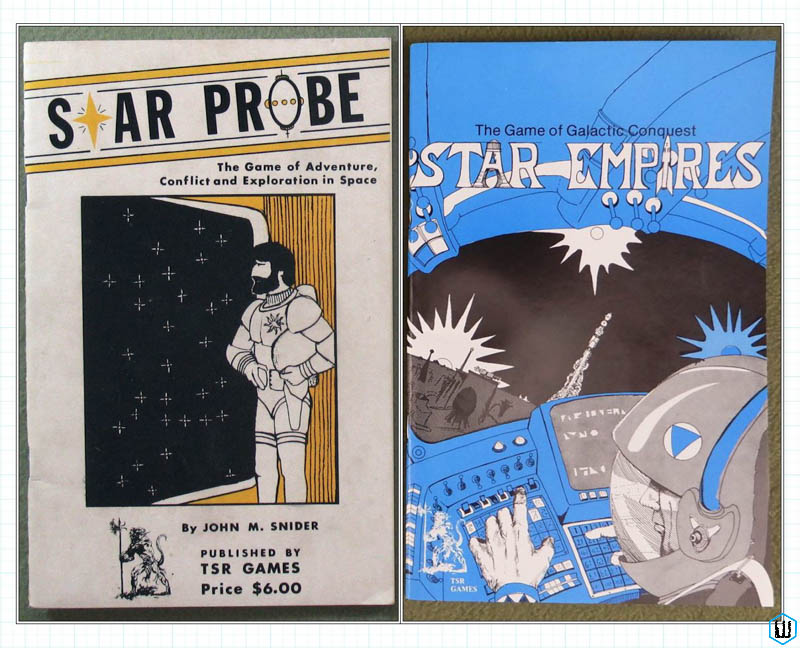
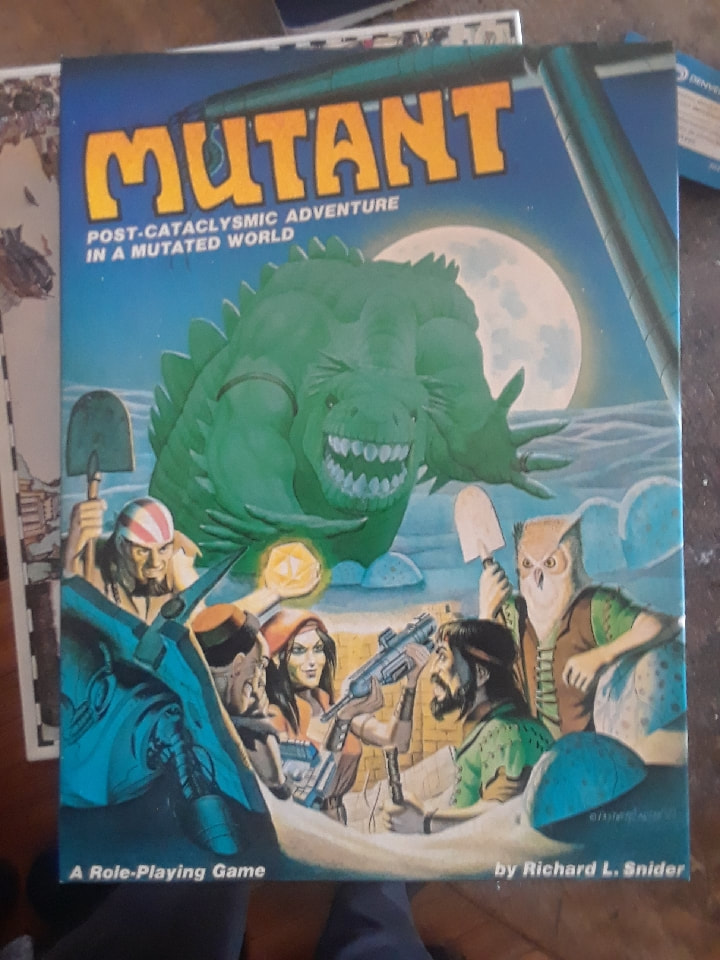

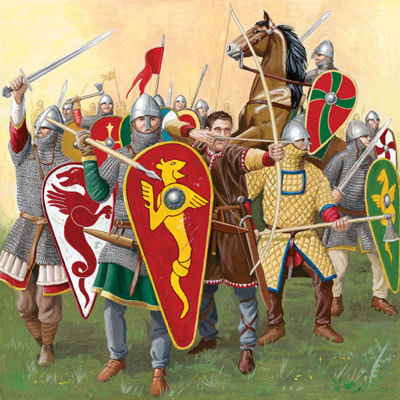
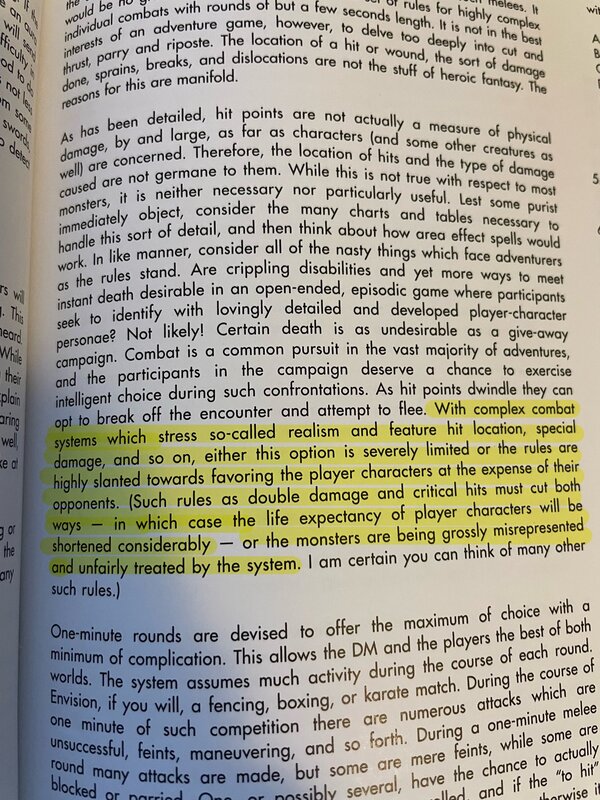
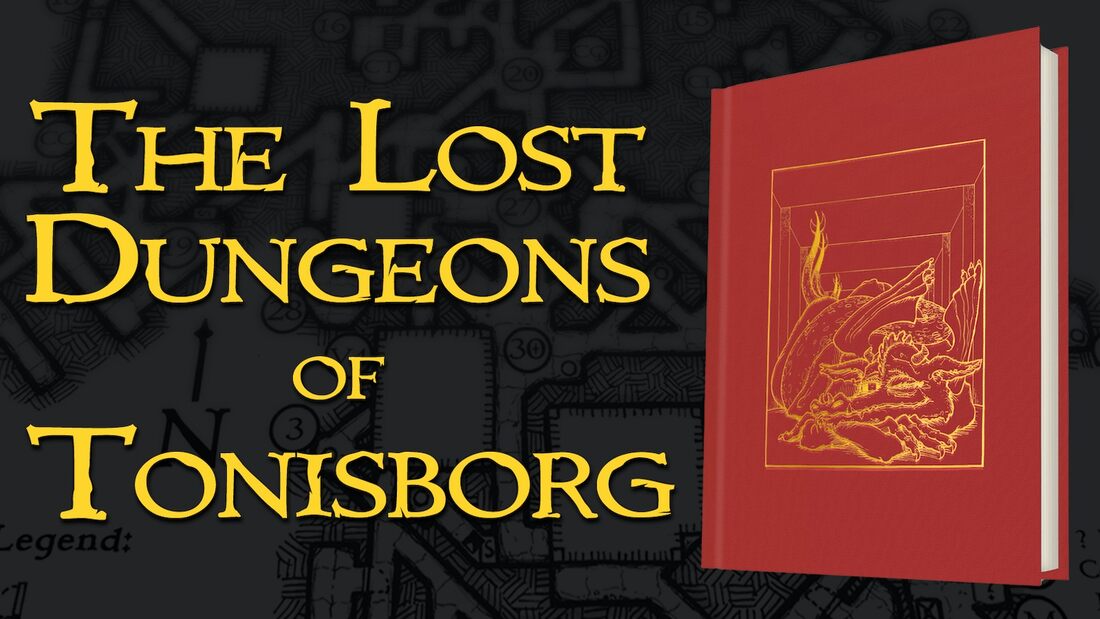

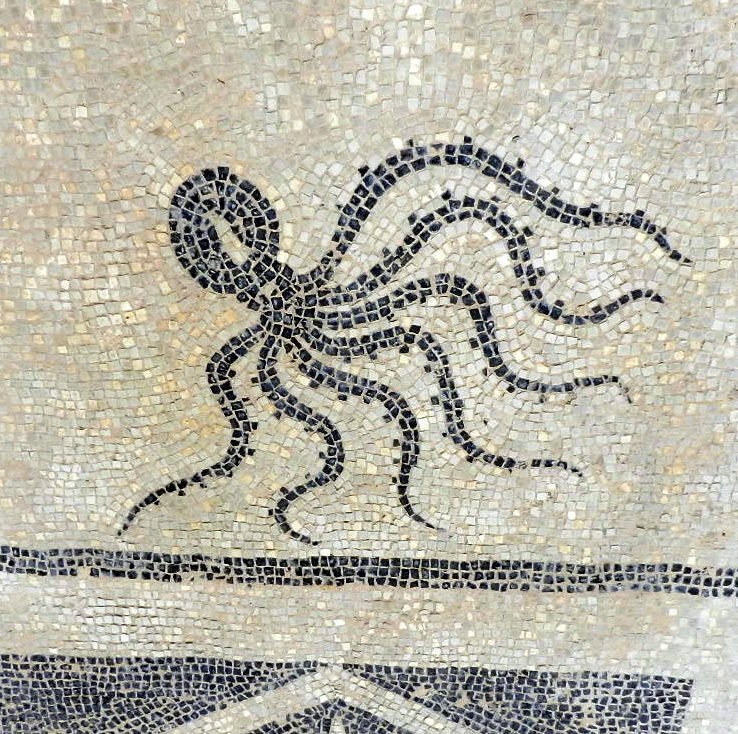
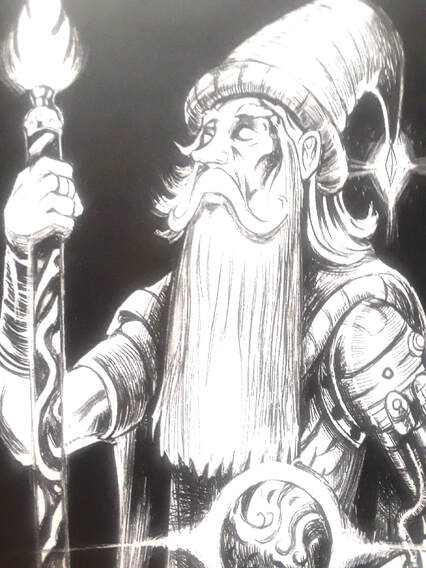
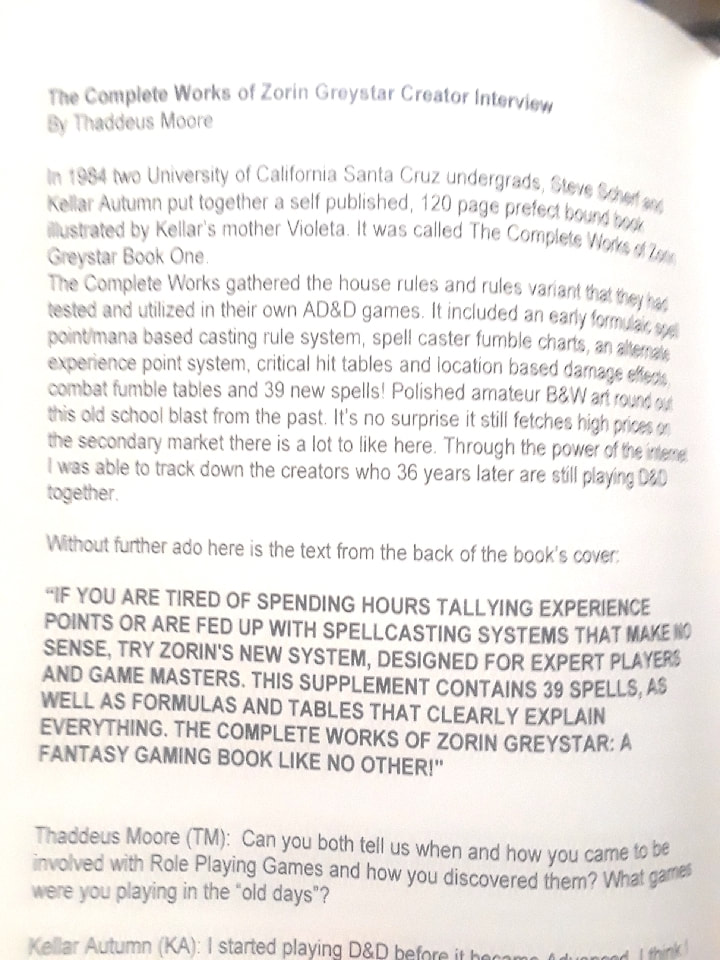
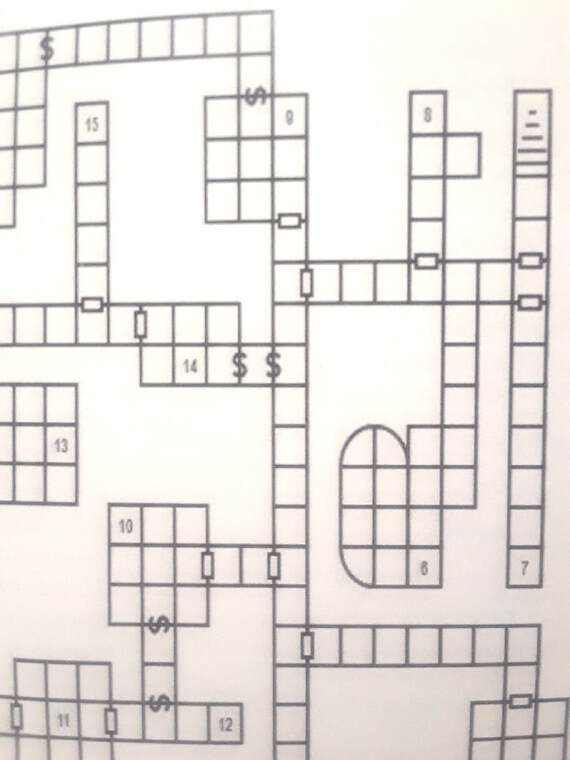
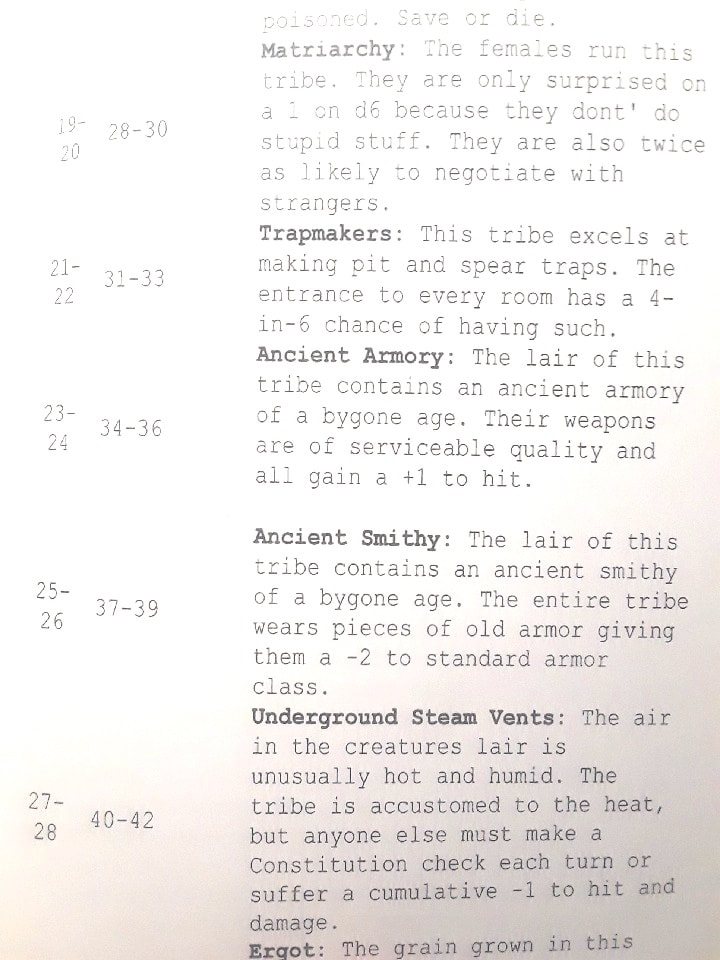
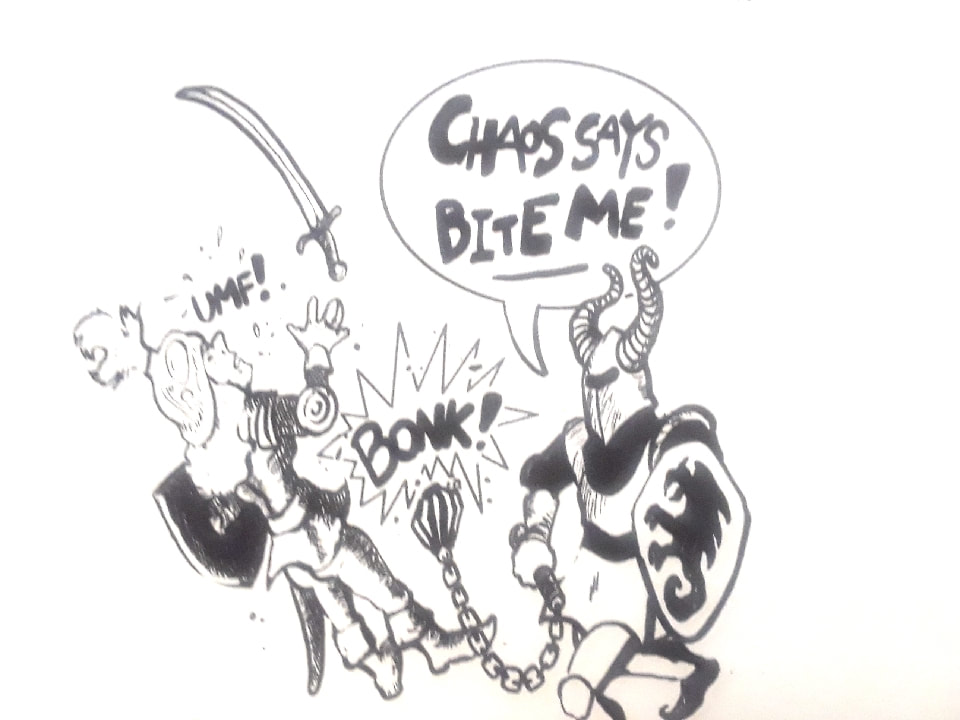
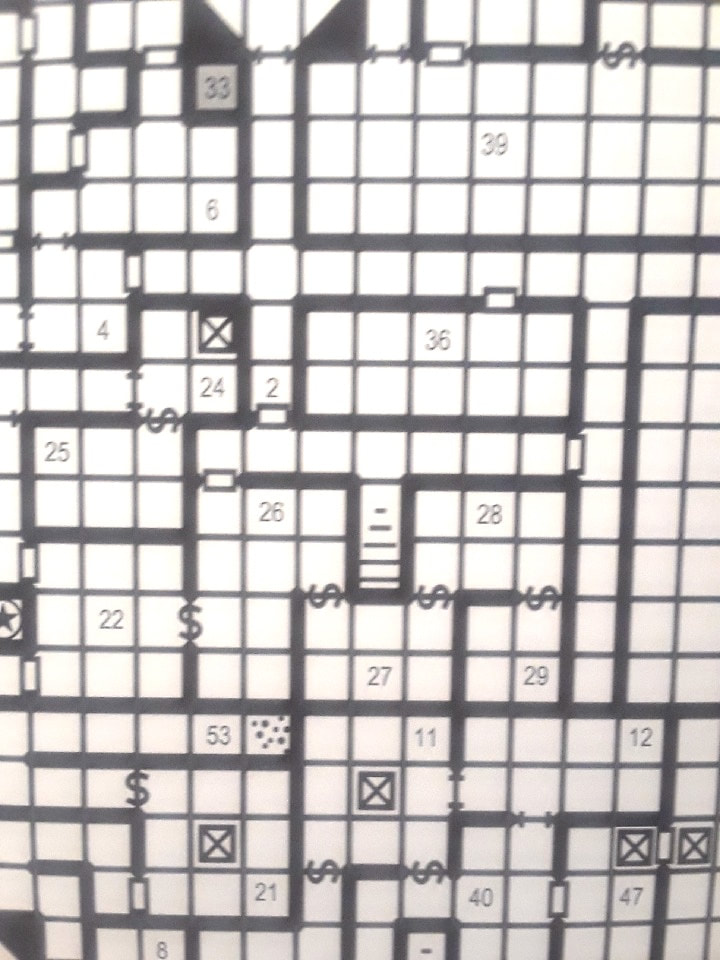
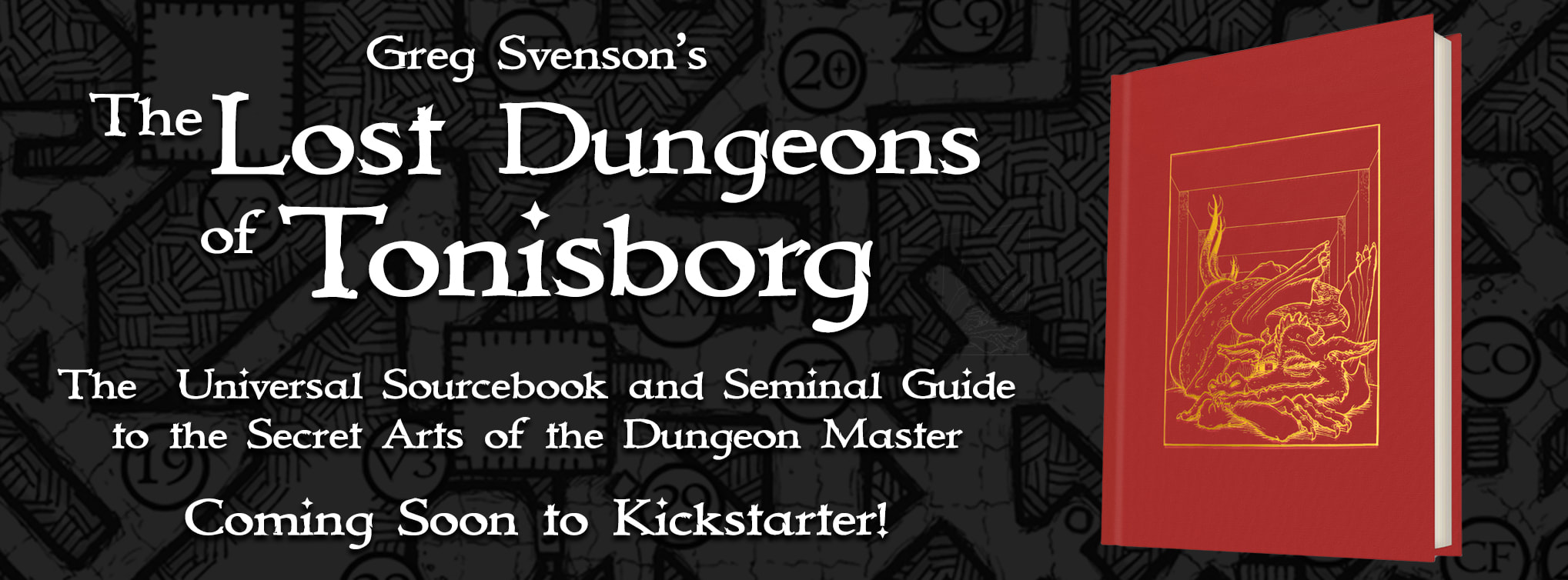
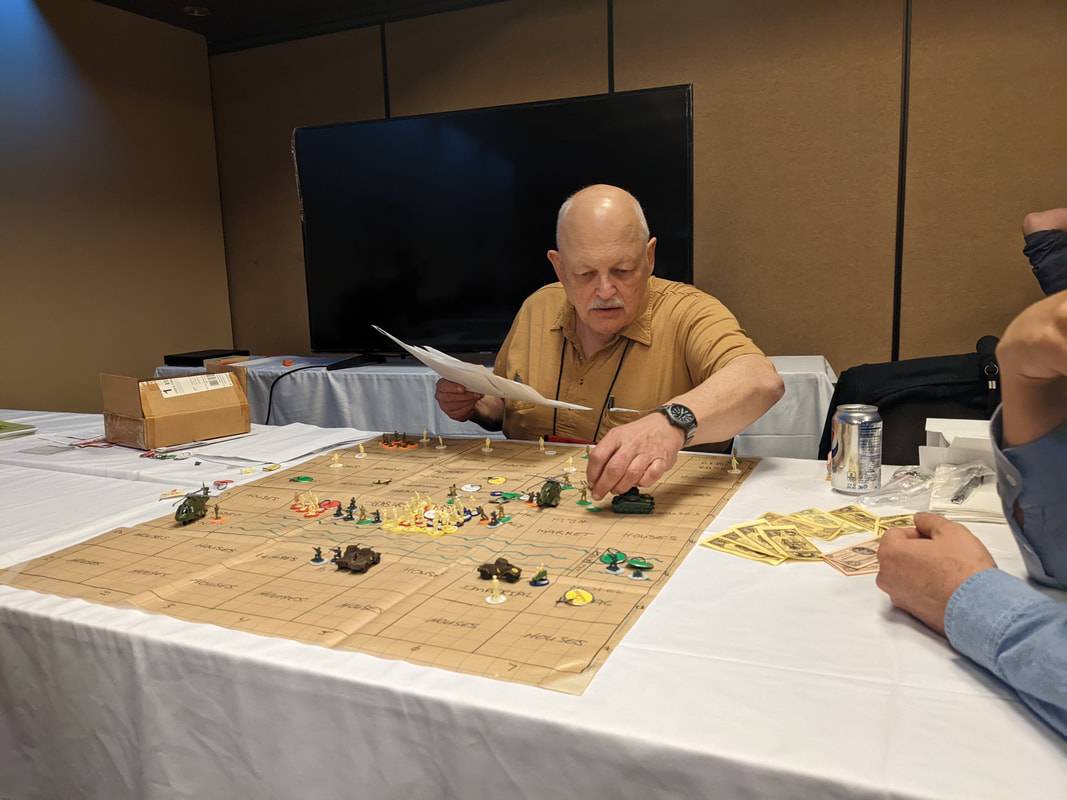
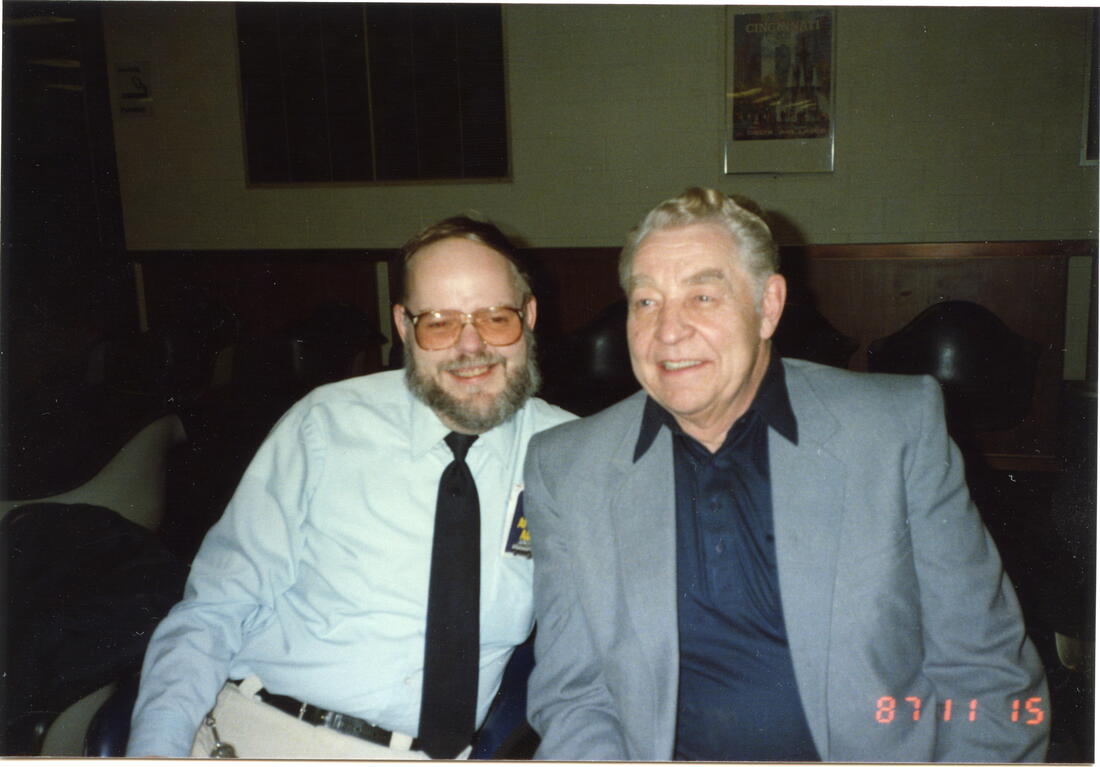
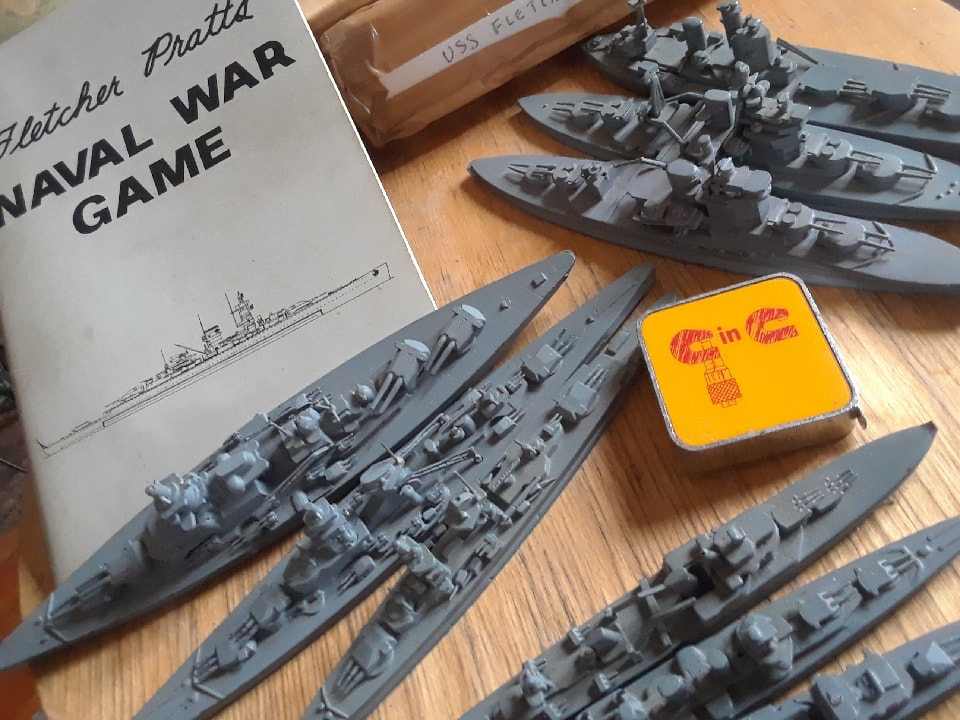
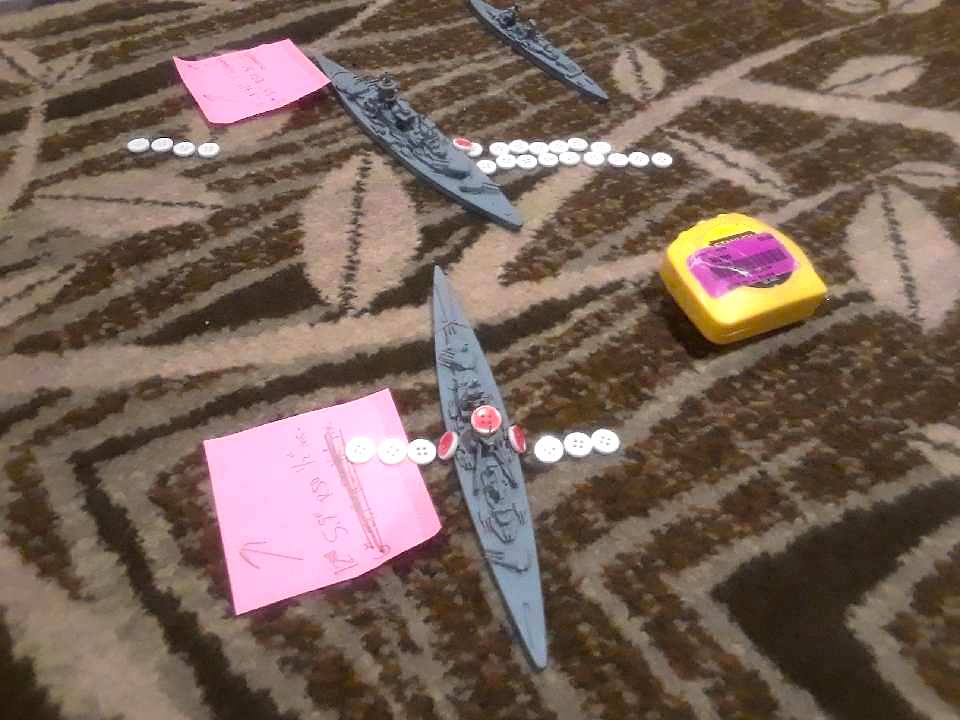
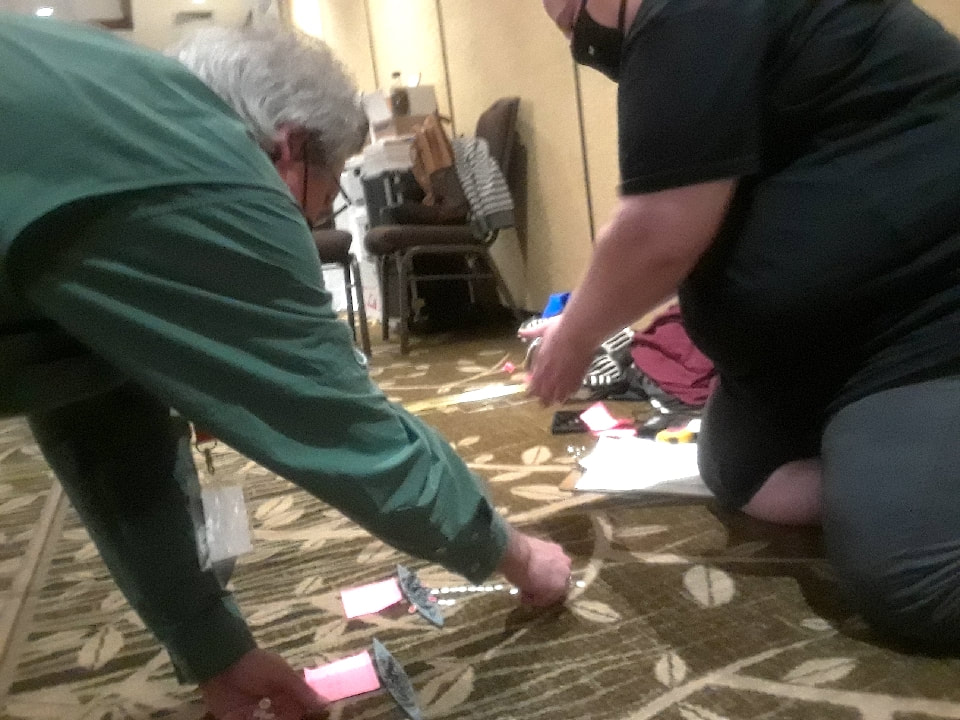
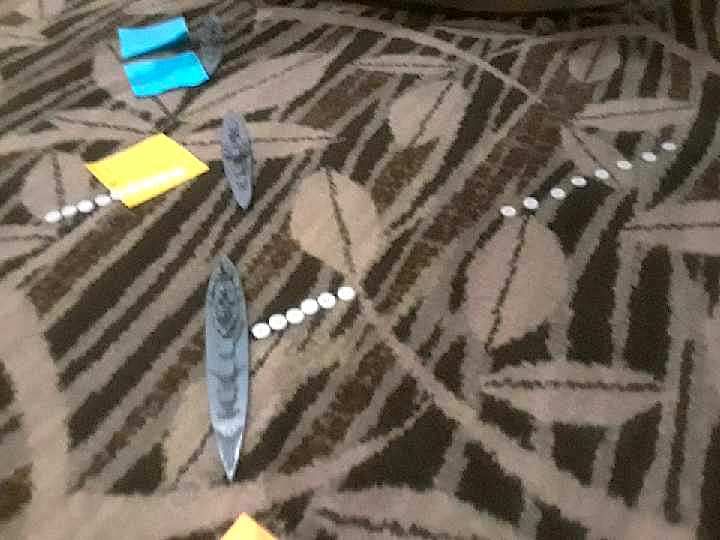
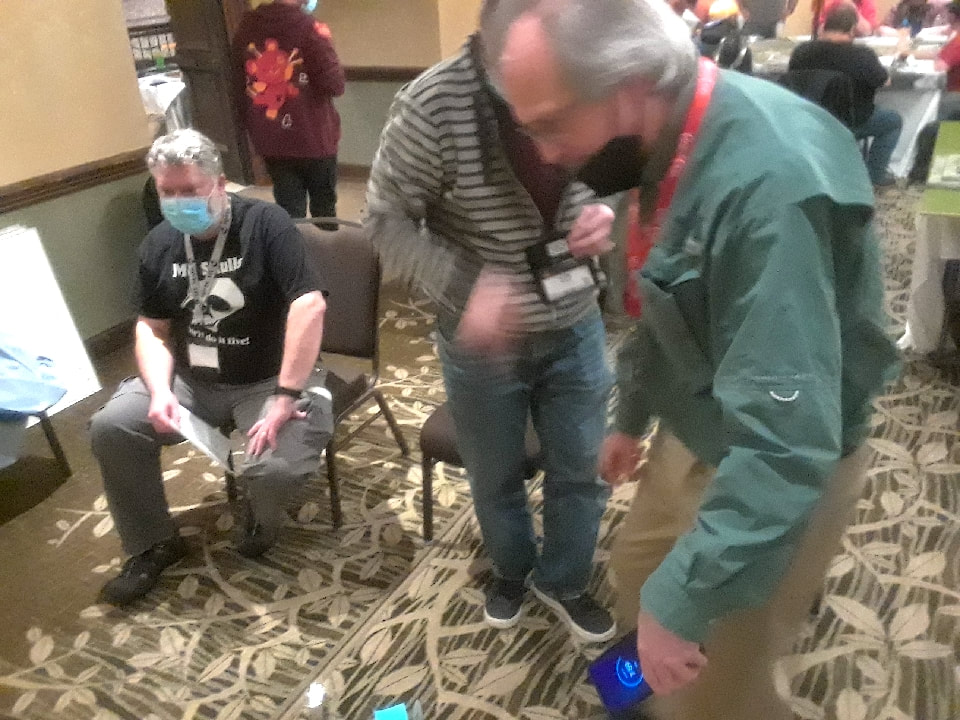
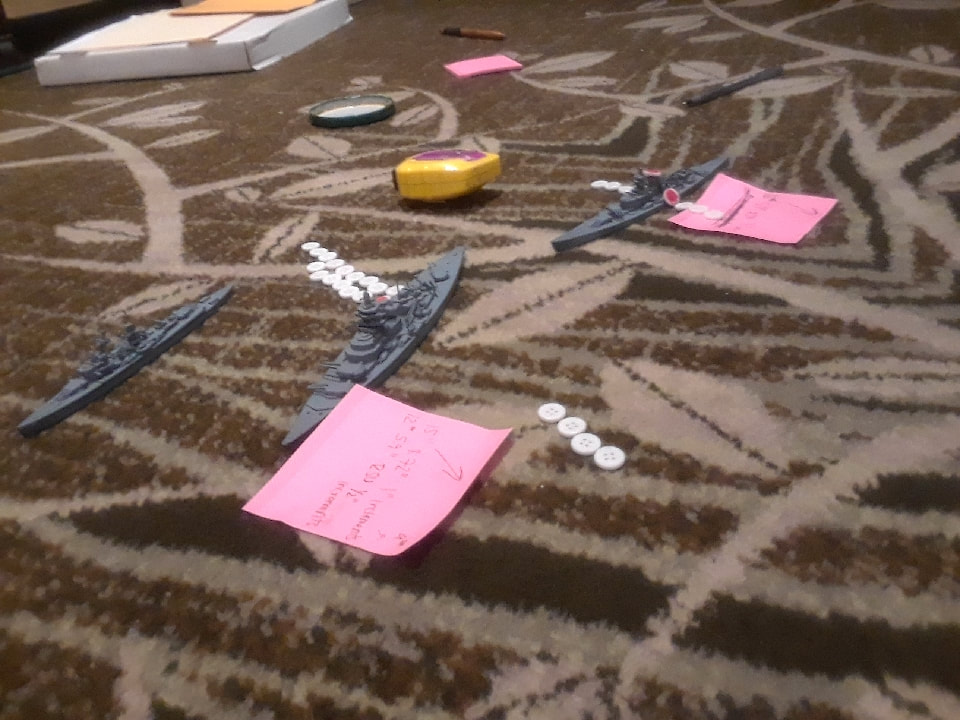
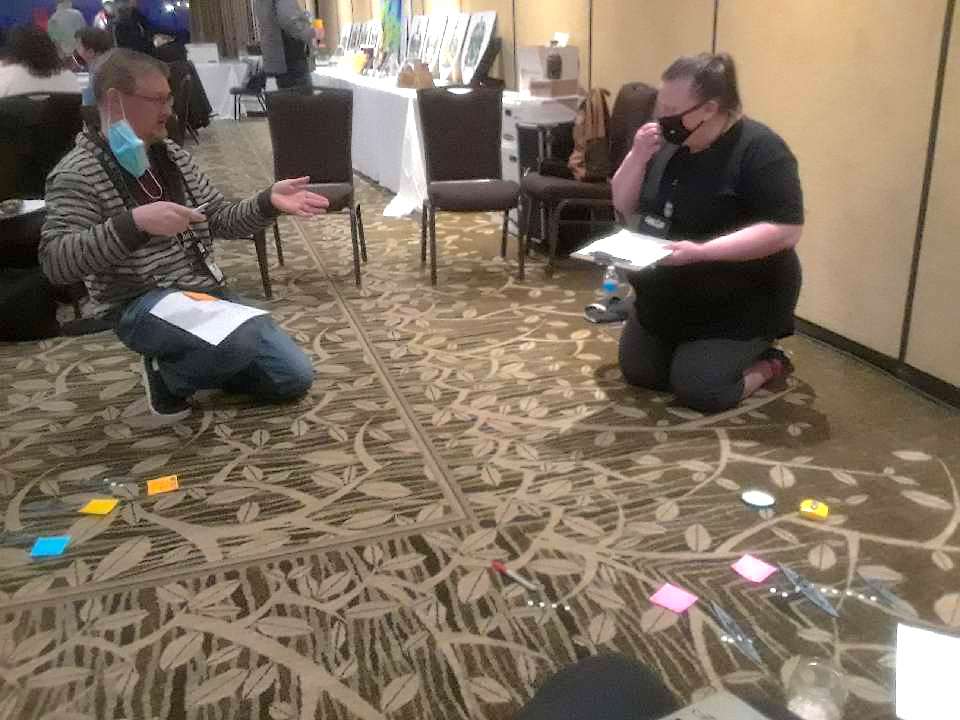
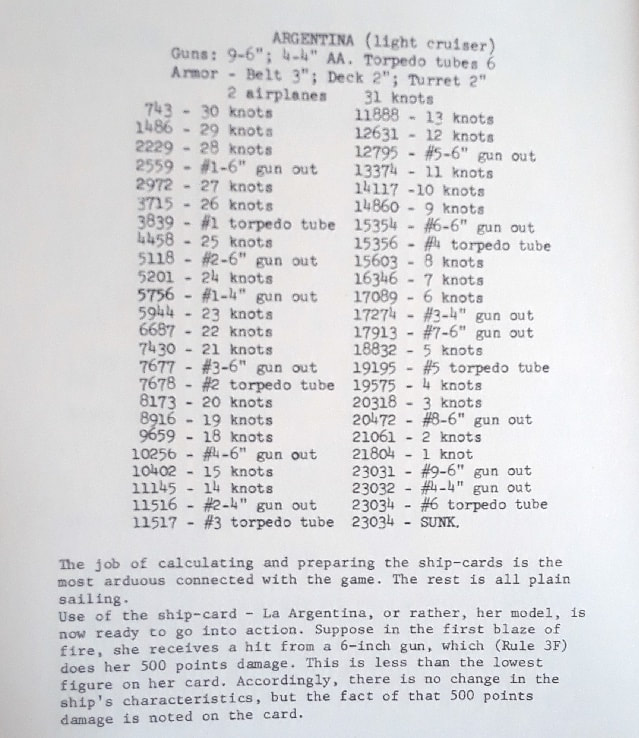
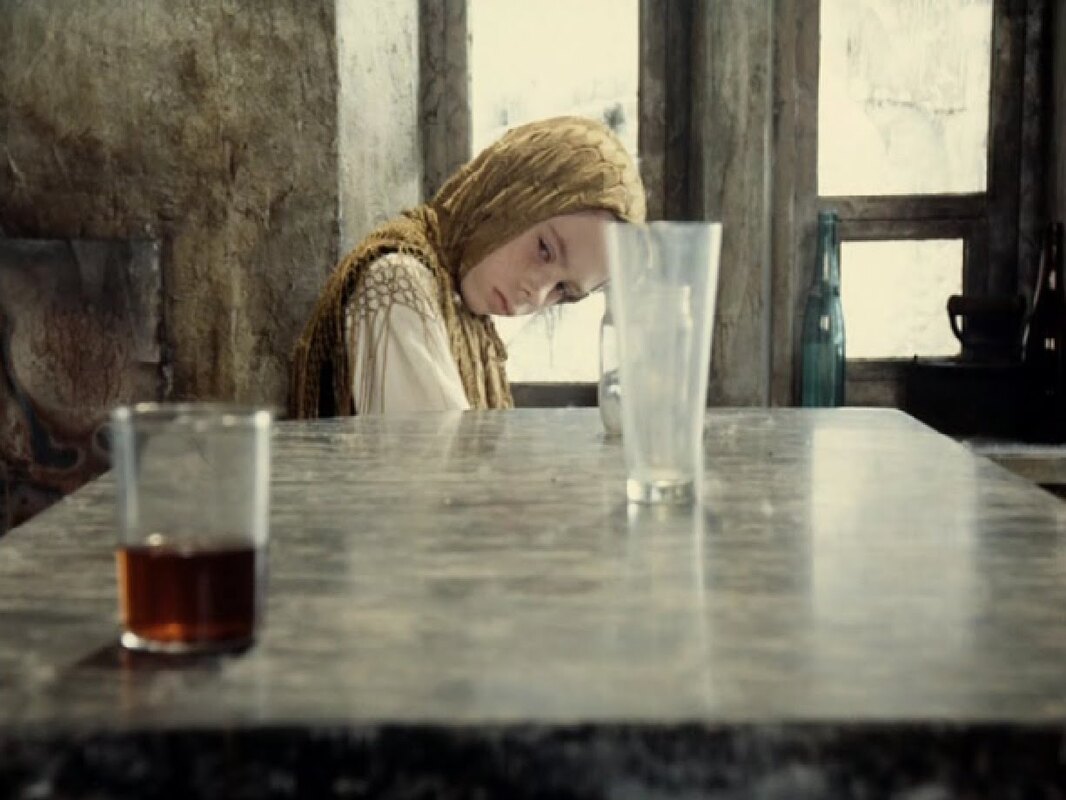
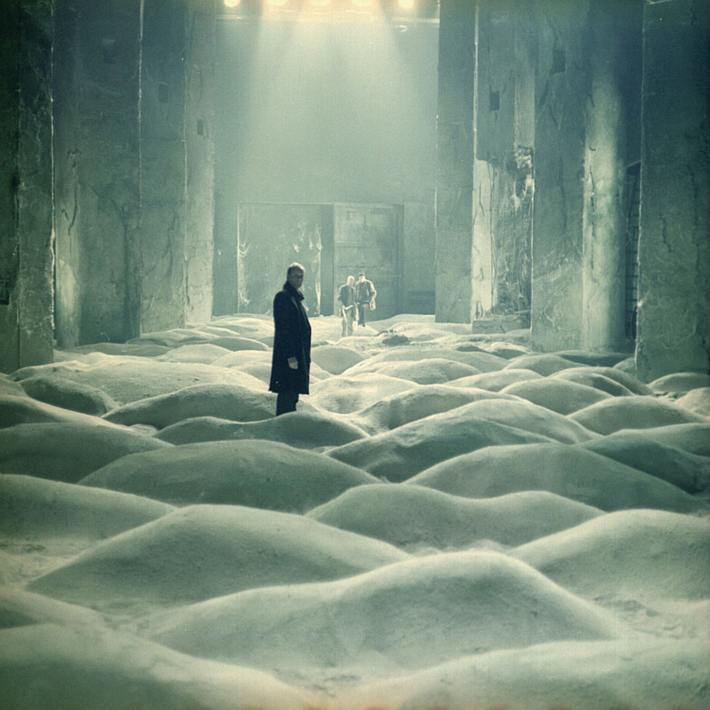
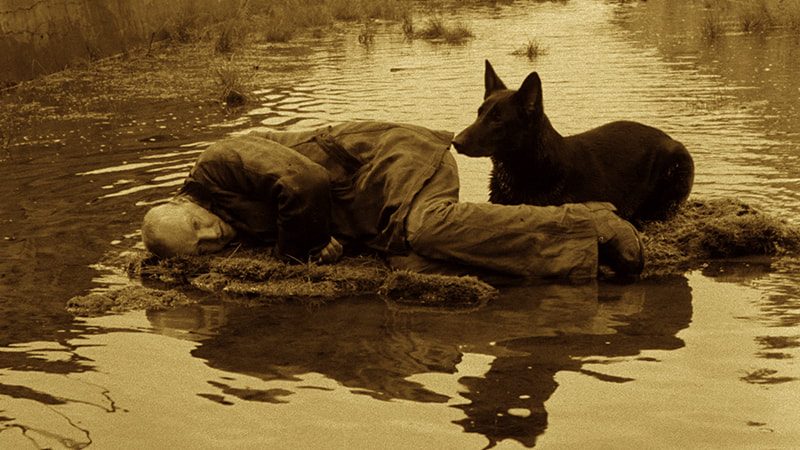
 RSS Feed
RSS Feed